TMJ Ear Pain: Understanding Temporomandibular Joint Disorders and Their Impact on Ear Health
What are the common symptoms of TMJ disorders. How does TMJ affect ear health. Can TMJ be mistaken for an ear infection. What are the best treatments for TMJ-related ear pain. How can you differentiate between TMJ and other causes of ear discomfort.
Understanding TMJ Disorders: More Than Just Jaw Pain
Temporomandibular joint (TMJ) disorders are a group of conditions affecting the jaw joint and surrounding muscles. While many associate TMJ issues primarily with jaw pain, these disorders can manifest in various ways, including ear discomfort. This connection often leads to misdiagnosis and confusion among patients and healthcare providers alike.
The temporomandibular joint is located extremely close to the ear canal and middle ear. This proximity explains why TMJ problems can cause symptoms that mimic ear infections or other ear-related issues. Understanding this relationship is crucial for proper diagnosis and treatment.
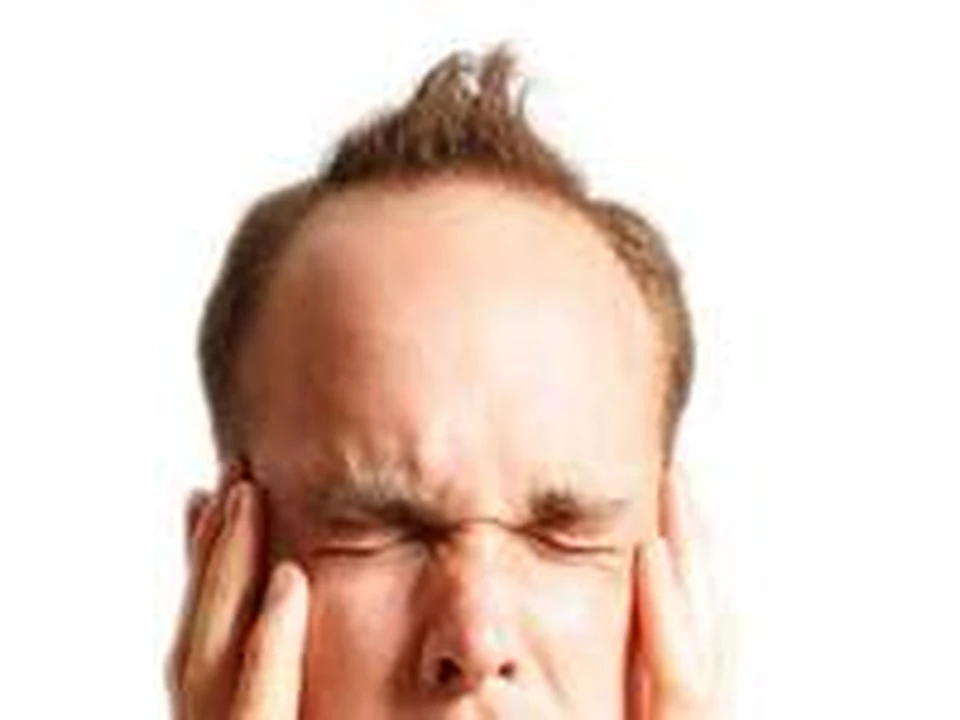
Common Symptoms of TMJ Disorders
- Pain or tenderness in the jaw
- Aching pain in and around the ear
- Difficulty or discomfort while chewing
- Facial pain
- Locking of the joint, making it difficult to open or close the mouth
- A clicking sound or grating sensation when opening the mouth or chewing
Is TMJ pain always severe? Not necessarily. TMJ discomfort can range from mild to debilitating, and symptoms may come and go over time. Some individuals may experience persistent pain, while others might have intermittent flare-ups.
The TMJ-Ear Connection: Why Your Ear Pain Might Not Be an Infection
Many patients visit their healthcare providers complaining of ear pain, assuming they have an ear infection. However, in adults, the most common cause of ear pain is often TMJ-related. This misconception can lead to delayed proper treatment and unnecessary antibiotic use.
The intricate connection between the TMJ and the ear involves shared nerves, muscles, and fascia. This anatomical relationship explains why TMJ disorders can cause various ear-related symptoms, including:

- Pain in one or both ears
- A feeling of fullness or stuffiness in the ears
- Tinnitus (ringing in the ears)
- Dizziness or vertigo
Do TMJ symptoms always affect both sides? Not always. Some individuals may experience unilateral (one-sided) symptoms, while others might have bilateral (both sides) discomfort.
Factors Contributing to TMJ Disorders: Beyond Simple Jaw Stress
TMJ disorders can arise from various factors, often involving a combination of physiological, psychological, and environmental elements. Understanding these contributing factors is essential for both prevention and treatment.
Common Predisposing Factors for TMJ Disorders
- Malocclusion: Misalignment of teeth can create uneven pressure on the jaw joint.
- Bruxism: Teeth grinding or clenching, often stress-related and occurring during sleep or intense concentration.
- Trauma: Injury to the jaw or surrounding areas can lead to TMJ issues.
- Arthritis: Various forms of arthritis can affect the TMJ.
- Stress: Emotional stress can lead to increased muscle tension and jaw clenching.
- Poor posture: Especially in the neck and upper back, can strain the TMJ.
- Chronic pain conditions: Fibromyalgia and other pain disorders can be associated with TMJ problems.
Can dental procedures trigger TMJ symptoms? Yes, certain dental procedures that require prolonged mouth opening, such as root canals or extensive cleanings, can sometimes lead to temporary TMJ discomfort.

Diagnosing TMJ Disorders: Separating Fact from Fiction
Accurate diagnosis of TMJ disorders is crucial for effective treatment. However, the overlap of symptoms with other conditions can make diagnosis challenging. Healthcare providers typically use a combination of methods to identify TMJ disorders.
Diagnostic Approaches for TMJ Disorders
- Physical examination: Checking jaw movement, listening for sounds, and assessing pain points.
- Detailed medical history: Understanding symptom patterns and potential contributing factors.
- Imaging tests: X-rays, CT scans, or MRIs may be used to visualize the joint and surrounding structures.
- TMJ arthroscopy: In some cases, a small camera may be used to examine the joint directly.
Are blood tests useful in diagnosing TMJ disorders? Generally, blood tests are not primary diagnostic tools for TMJ issues. However, they may be used to rule out other conditions or identify underlying inflammatory processes.
Conservative Treatment Approaches: Managing TMJ Pain Without Surgery
For most individuals with TMJ disorders, conservative treatments are the first line of defense. These approaches aim to alleviate pain, reduce inflammation, and improve jaw function without invasive procedures.

Effective Conservative Treatments for TMJ Disorders
- Soft diet: Temporarily avoiding hard, chewy foods to reduce stress on the jaw.
- Heat therapy: Applying warm compresses to relax muscles and improve blood flow.
- Over-the-counter pain relievers: Non-steroidal anti-inflammatory drugs (NSAIDs) can help manage pain and inflammation.
- Jaw exercises: Gentle stretching and strengthening exercises to improve jaw mobility and function.
- Stress management: Techniques like meditation or counseling to reduce overall tension.
- Posture correction: Improving neck and back posture to reduce strain on the TMJ.
- Avoiding extreme jaw movements: Limiting wide yawning, gum chewing, and other stressful jaw activities.
How long does it typically take to see improvement with conservative treatments? Many patients experience relief within a few weeks of consistent conservative care. However, individual responses can vary, and some may require longer treatment periods.
The Role of Mouthguards and Bite Plates in TMJ Management
Mouthguards and bite plates play a significant role in managing TMJ disorders, especially for individuals who experience bruxism or nocturnal teeth grinding. These devices help to redistribute forces across the jaw, reduce muscle tension, and protect teeth from excessive wear.
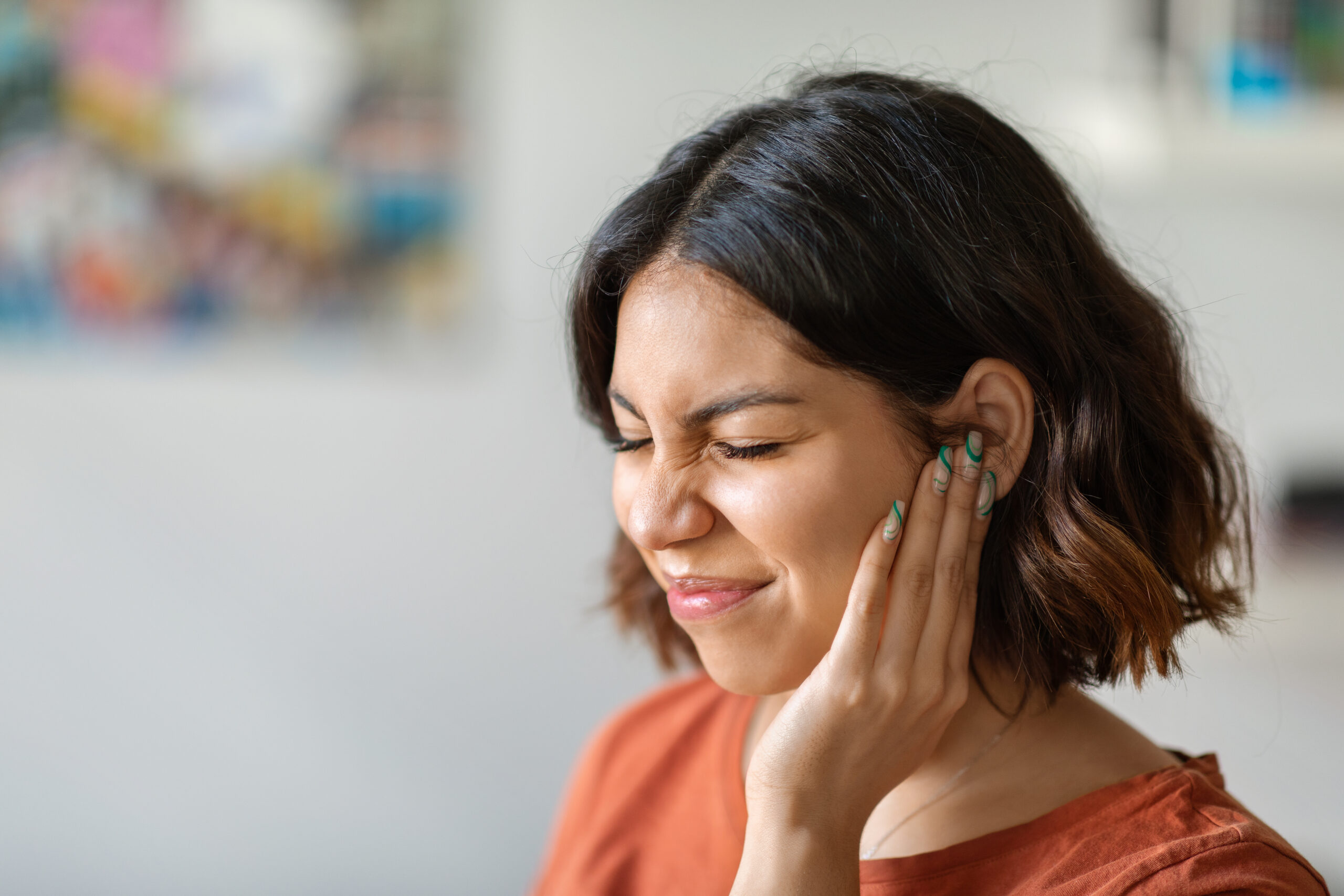
Types of Mouthguards and Bite Plates
- Over-the-counter mouthguards: Affordable and readily available, but may not provide optimal fit.
- Custom-fitted bite plates: Made by dentists to precisely fit an individual’s mouth, offering superior comfort and effectiveness.
- Repositioning splints: Designed to slightly alter jaw position to relieve pressure on the TMJ.
- Soft vs. hard mouthguards: Each type has its advantages, depending on the specific TMJ issue.
Should mouthguards be worn during the day or only at night? While nighttime use is most common, some individuals may benefit from daytime wear, especially during stressful activities or when symptoms are particularly active. A healthcare provider can offer personalized advice.
Beyond the Jaw: TMJ’s Impact on Overall Head and Neck Health
TMJ disorders can have far-reaching effects beyond localized jaw pain. The intricate network of muscles, nerves, and connective tissues in the head and neck region means that TMJ issues can manifest in various ways throughout this area.

Extended Symptoms of TMJ Disorders
- Headaches: Often mistaken for tension or migraine headaches.
- Neck pain: Stiffness or soreness in the neck muscles.
- Facial pain: Discomfort that may extend across the cheeks or into the temples.
- Sinus-like symptoms: Pressure in the face that mimics sinus infections.
- Eye discomfort: Pain or pressure behind or around the eyes.
- Shoulder tension: Radiating discomfort into the upper back and shoulders.
- Sleep disturbances: Difficulty sleeping due to pain or discomfort.
Can TMJ disorders cause chronic fatigue? While TMJ itself doesn’t directly cause chronic fatigue, the persistent pain, sleep disturbances, and stress associated with TMJ problems can contribute to feelings of fatigue and decreased energy levels.
Differential Diagnosis: When It’s Not TMJ
While TMJ disorders are a common cause of ear and facial pain, it’s crucial to consider other potential causes. Accurate diagnosis is essential for appropriate treatment and management of symptoms.
Other Conditions That May Mimic TMJ Symptoms
- Ear infections (otitis media or externa)
- Dental problems (cavities, abscesses)
- Trigeminal neuralgia
- Sinus infections
- Facial neuralgias
- Salivary gland disorders
- Cervical spine issues
How can healthcare providers differentiate between TMJ and these other conditions? A thorough physical examination, detailed patient history, and sometimes imaging studies are used to distinguish TMJ disorders from other conditions. In some cases, referral to specialists (like ENTs or neurologists) may be necessary for definitive diagnosis.

The Importance of Comprehensive Evaluation
Given the complexity of TMJ disorders and their potential to mimic other conditions, a comprehensive evaluation is crucial. This may involve collaboration between dentists, primary care physicians, otolaryngologists, and other specialists to ensure accurate diagnosis and appropriate treatment planning.
Is it possible to have both TMJ disorder and another condition simultaneously? Yes, it’s possible for TMJ issues to coexist with other health problems. This underscores the importance of a thorough diagnostic process to address all contributing factors to a patient’s symptoms.
Advanced Treatment Options for Persistent TMJ Disorders
While conservative treatments are effective for many individuals with TMJ disorders, some may require more advanced interventions. These options are typically considered when conservative approaches have not provided sufficient relief.
Advanced TMJ Treatment Modalities
- Botox injections: To relax overactive jaw muscles.
- Corticosteroid injections: To reduce inflammation within the joint.
- Arthrocentesis: A minimally invasive procedure to flush out the joint space.
- Arthroscopy: A surgical procedure using small instruments and a camera for joint repair.
- Open joint surgery: Reserved for severe cases or joint deformities.
- Physical therapy: Advanced techniques to improve jaw function and reduce pain.
- Cognitive-behavioral therapy: To address psychological factors contributing to TMJ symptoms.
What factors determine the need for advanced treatments? The severity and duration of symptoms, impact on quality of life, and response to conservative treatments all play a role in determining whether advanced interventions are necessary.
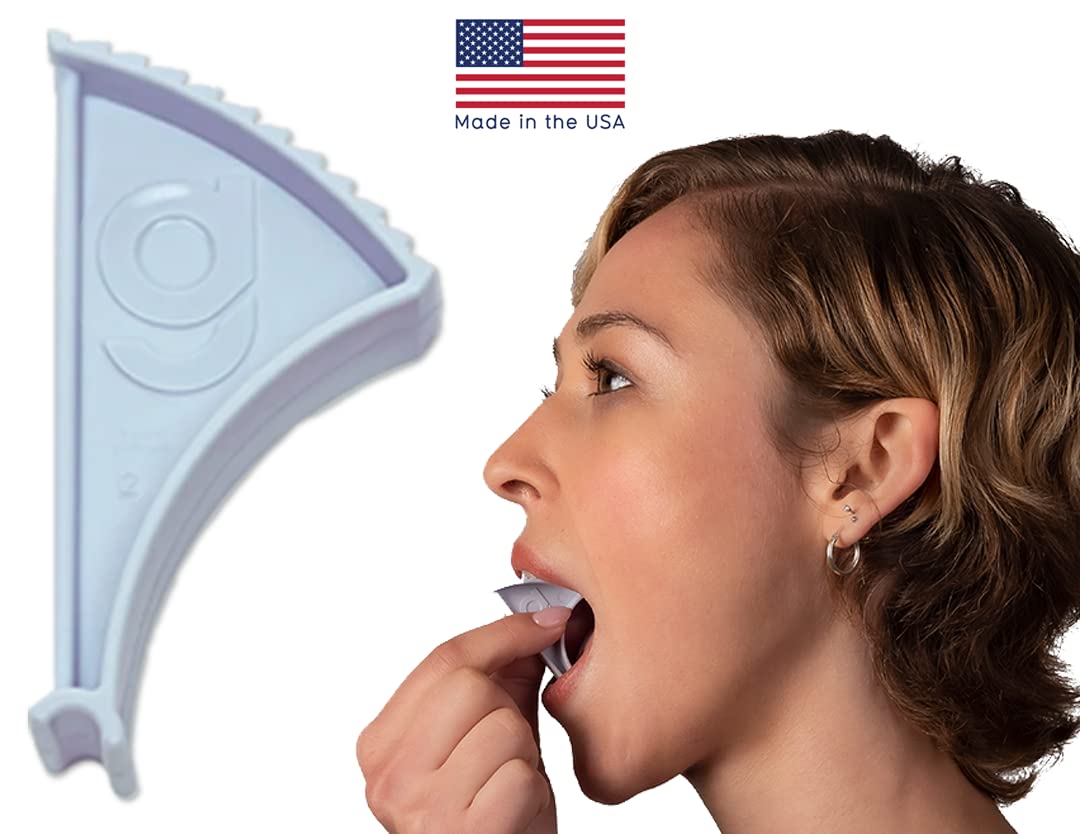
The Role of Multidisciplinary Care
Managing complex TMJ cases often requires a multidisciplinary approach. This may involve collaboration between dentists, oral surgeons, pain specialists, physical therapists, and mental health professionals to address all aspects of the condition.
How long does recovery typically take after advanced TMJ treatments? Recovery times can vary widely depending on the specific procedure and individual factors. Some patients may experience improvement within weeks, while others may require several months for full recovery.
Living with TMJ: Lifestyle Modifications and Long-Term Management
For many individuals with TMJ disorders, long-term management involves a combination of medical interventions and lifestyle adjustments. These changes can help reduce symptom flare-ups and improve overall quality of life.
Key Lifestyle Modifications for TMJ Management
- Stress reduction techniques: Meditation, yoga, or other relaxation methods.
- Ergonomic adjustments: Proper posture at work and during sleep.
- Dietary changes: Avoiding hard or chewy foods that stress the jaw.
- Regular exercise: To improve overall musculoskeletal health.
- Sleep hygiene: Ensuring adequate, quality sleep to reduce stress on the body.
- Avoiding jaw-straining habits: Such as nail-biting or phone cradling.
Can TMJ disorders be completely cured? While many individuals experience significant improvement or resolution of symptoms with proper treatment, some may need ongoing management. The goal is often to control symptoms and prevent flare-ups rather than achieving a complete “cure.”

The Importance of Patient Education and Self-Management
Empowering patients with knowledge about their condition and self-management techniques is crucial for long-term success. This includes understanding trigger factors, recognizing early signs of flare-ups, and knowing when to seek professional help.
What role does diet play in managing TMJ disorders? A soft diet during flare-ups can help reduce stress on the jaw. Long-term, a balanced diet rich in anti-inflammatory foods may contribute to overall joint health and pain reduction.
Research and Future Directions in TMJ Disorder Treatment
The field of TMJ disorder research is dynamic, with ongoing studies exploring new treatment modalities and improving our understanding of these complex conditions. These advancements hold promise for more effective and personalized treatments in the future.
Emerging Areas of TMJ Research
- Regenerative medicine: Exploring stem cell therapies to repair damaged joint tissues.
- Advanced imaging techniques: Improving diagnostic accuracy and treatment planning.
- Genetic factors: Investigating the role of genetics in TMJ disorder susceptibility.
- Neuroscience: Understanding the brain’s role in chronic TMJ pain.
- Biomaterials: Developing new materials for joint replacement or repair.
- Pharmacological advances: Exploring targeted medications for pain and inflammation.
- Personalized medicine: Tailoring treatments based on individual patient factors.
How might these research areas change TMJ treatment in the coming years? As our understanding of TMJ disorders grows, we may see more targeted, effective treatments with fewer side effects. Personalized approaches based on genetic and individual factors could lead to better outcomes and improved quality of life for those affected by TMJ disorders.

The Role of Patient Participation in Research
Patient involvement in clinical trials and research studies is crucial for advancing our understanding and treatment of TMJ disorders. Individuals interested in contributing to this field should discuss potential research opportunities with their healthcare providers.
Are there any promising new treatments on the horizon for TMJ disorders? While specific breakthroughs are difficult to predict, ongoing research in areas like regenerative medicine and targeted pain management shows promise for improving TMJ disorder treatments in the future.
Do You Have an Ear Infection Or Is It Really TMJ? | Ear Pain Relief
At least once a day, someone comes into our offices complaining of ear pain. Most of our patients think that they have an ear infection based on assumption (the pain is coming from the ear region after all!) or becuase their primary care physician indicated as such. Some patients are indeed diagnosed with ear infections but it may come as a surprise that most ear pain has nothing wrong with the ears.
The most common cause of ear pain in an adult is the temporo-mandibular joint or TMJ. The temporo-mandibular joint is located extremely close to the ear canal and middle ear. The muscles that surround the temporo-mandibular joint and the fascia and ligaments that hold the bones in place are intricately connected with the ear and the nerve that supports the ear. Frequently the pain (in one ear or both) has persisted for several weeks and may even come and go. Very often, hearing hasn’t been affected but there will be a stuffy or clogged feeling in the ear. Ear pain is often worse at night or in the morning. Some patients even tell us that their ear pain is worse when they chew or yawn.
Most people with TMJ disorder have some kind of predisposing factor. The most common factor is that the molar teeth do not fit together that well (called a mild malocclusion). When the teeth do not fit together perfectly, biting can cause stress at the jaw joint because an abnormal or uneven force is being applied to one or both of the joint spaces. Very often, people with TMJ have what doctors call bruxism which means that they either clench or grind their teeth. Tooth clenchers tend to clench during the day when they are concentrating or thinking hard about something. The tooth grinders tend to do it at night while they are sleeping. This is a completely involuntary behavior which is mildly stress-related. Ear pain can also be caused by a dental procedure such as root canal or gum cleaning.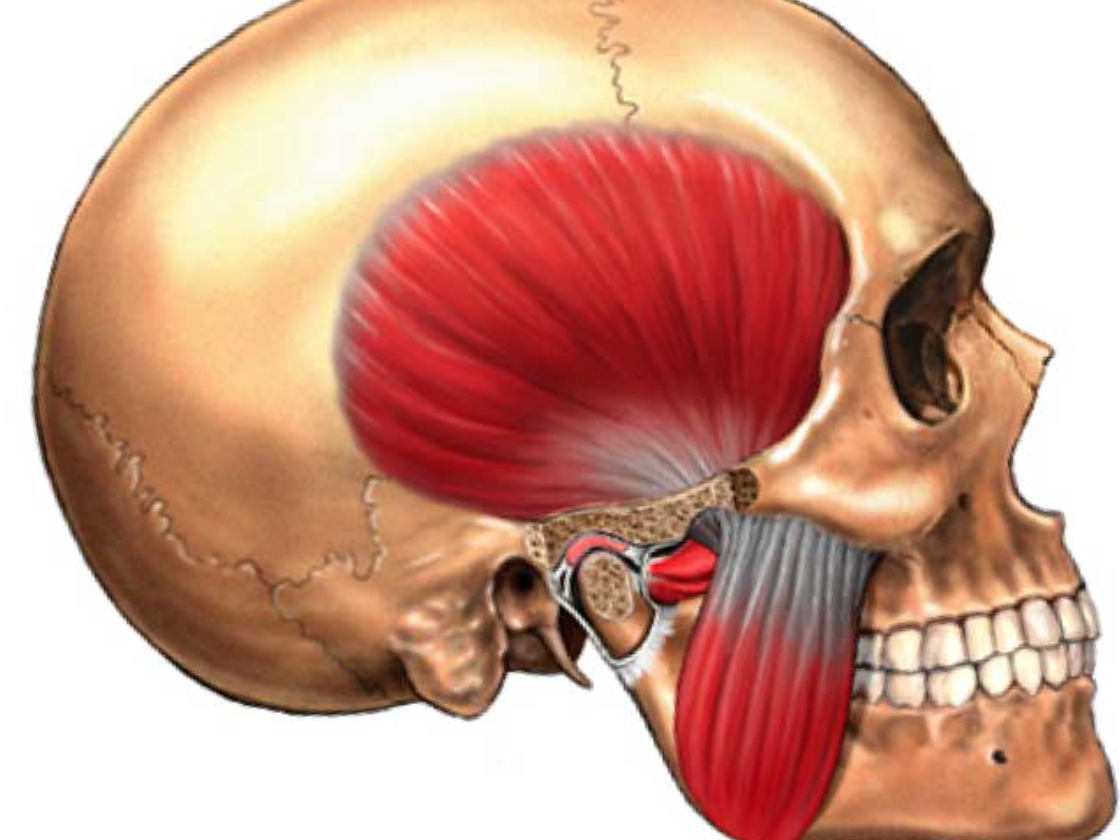 During these procedures, the temporo-mandibular joint has been stressed because the mouth was held open for a long period of time. There may be some muscle or ligament strain that starts it. Interestingly, many people with this problem will also experience tinnitus or ringing in their affected ear. We do not really understand why the tinnitus is more active during times of temporo-mandibular joint stress; however, because it is a higher brain function, it may be that problems with the ear simply bring the brain’s attention to this part of the body and tinnitus results. The good news is that after the temporo-mandibular joint disorder is treated, the tinnitus and ear pain will resolve.
During these procedures, the temporo-mandibular joint has been stressed because the mouth was held open for a long period of time. There may be some muscle or ligament strain that starts it. Interestingly, many people with this problem will also experience tinnitus or ringing in their affected ear. We do not really understand why the tinnitus is more active during times of temporo-mandibular joint stress; however, because it is a higher brain function, it may be that problems with the ear simply bring the brain’s attention to this part of the body and tinnitus results. The good news is that after the temporo-mandibular joint disorder is treated, the tinnitus and ear pain will resolve.
The conservative treatment for ear pain caused by temporo-mandibular joint disorder is very simple. First, we recommend a soft diet which means no heavy chewing of foods such as raw fruits and vegetables, hard-crusted bread or tough meat. We recommend soft foods such as noodles, scrambled eggs, well-cooked meat and vegetables to reduce the strain on the jaw joint during eating. Of course, we recommend no chewing of gum or other recreational chewing. We recommend the application of warm packs a couple of times a day to help relax some of the musculature in that area. We also recommend prescription-strength anti-inflammatory medications such as ibuprofen around-the-clock for about a week to reduce the inflammation in that area. These measures should help resolve the TMJ flare. Also helpful is the use of a mouthguard or bite plate, especially during sleep. Mouthguards relieve stress from the joint and our TMJ patients have reported instant relief after use. Mouthguards are available over-the-counter and are quite affordable. There are custom bite plates as well that your dentist can make for you which are much more expensive but also more clinically effective.
TMJ can cause other problems in the head and neck, as well. Often, people who clench at night will awake with aches across their cheeks or in the lower jaw.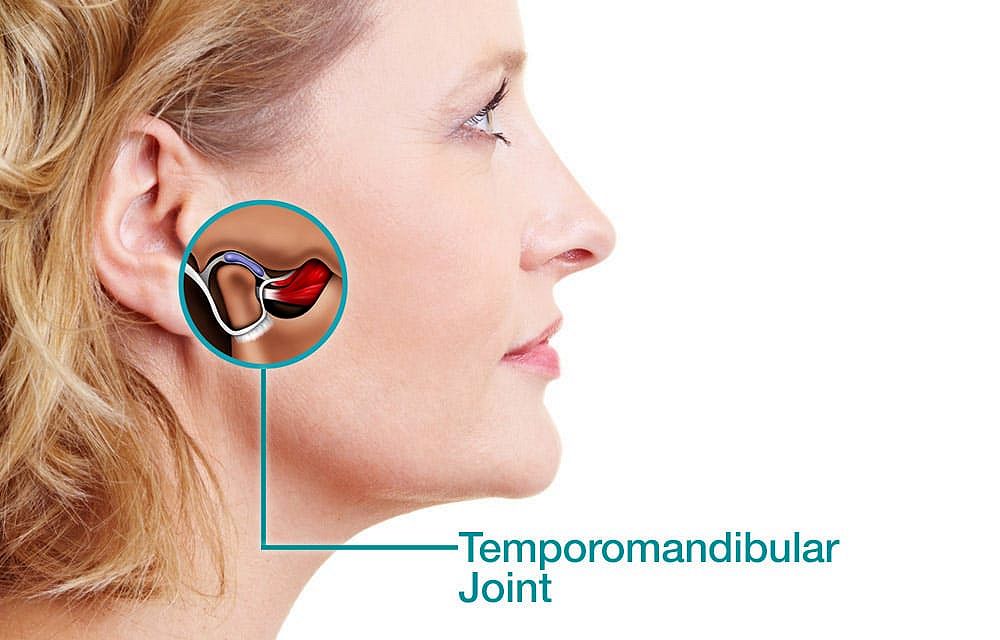 Inflammation of the fascia surrounding the jaw joint can also cause pain that radiates from the ear area up into the temporal muscle in the temple and/or into the neck muscles. Sometimes, people will even think that they have a sinus infection because of the combination of facial pressure and ear pain that they experience.
Inflammation of the fascia surrounding the jaw joint can also cause pain that radiates from the ear area up into the temporal muscle in the temple and/or into the neck muscles. Sometimes, people will even think that they have a sinus infection because of the combination of facial pressure and ear pain that they experience.
Other common causes of ear pain are swimmer’s ear or excessive wax impaction which are disorders of the ear canal. Also, less common in adults is otitis media which is an infection of the middle ear. This is the same kind of ear infection that babies and young children often get.
Temporomandibular Joint Disorders (TMJ & TMD): Overview
Your temporomandibular joint is a hinge that connects your jaw to the temporal bones of your skull, which are in front of each ear. It lets you move your jaw up and down and side to side, so you can talk, chew, and yawn.
Problems with your jaw and the muscles in your face that control it are known as temporomandibular disorders (TMD). But you may hear it wrongly called TMJ, after the joint.
What Causes TMD?
We don’t know what causes TMD. Dentists believe symptoms arise from problems with the muscles of your jaw or with the parts of the joint itself.
Injury to your jaw, the joint, or the muscles of your head and neck — like from a heavy blow or whiplash — can lead to TMD. Other causes include:
- Grinding or clenching your teeth, which puts a lot of pressure on the joint
- Movement of the soft cushion or disc between the ball and socket of the joint
- Arthritis in the joint
- Stress, which can cause you to tighten facial and jaw muscles or clench the teeth
What Are the Symptoms?
TMD often causes severe pain and discomfort. It can be temporary or last many years. It might affect one or both sides of your face. More women than men have it, and it’s most common among people between the ages of 20 and 40.
Common symptoms include:
- Pain or tenderness in your face, jaw joint area, neck and shoulders, and in or around the ear when you chew, speak, or open your mouth wide
- Problems when you try to open your mouth wide
- Jaws that get “stuck” or “lock” in the open- or closed-mouth position
- Clicking, popping, or grating sounds in the jaw joint when you open or close your mouth or chew.
 This may or may not be painful.
This may or may not be painful. - A tired feeling in your face
- Trouble chewing or a sudden uncomfortable bite — as if the upper and lower teeth are not fitting together properly
- Swelling on the side of your face
You may also have toothaches, headaches, neck aches, dizziness, earaches, hearing problems, upper shoulder pain, and ringing in the ears (tinnitus).
How Is TMD Diagnosed?
Many other conditions cause similar symptoms — like tooth decay, sinus problems, arthritis, or gum disease. To figure out what’s causing yours, the dentist will ask about your health history and conduct a physical exam.
They’ll check your jaw joints for pain or tenderness and listen for clicks, pops, or grating sounds when you move them. They’ll also make sure your jaw works like it should and doesn’t lock when you open or close your mouth. Plus they’ll test your bite and check for problems with your facial muscles.
Your dentist may take full face X-rays so they can view your jaws, temporomandibular joints, and teeth to rule out other problems. They may need to do other tests, like magnetic resonance imaging (MRI) or computer tomography (CT). The MRI can show if the TMJ disc is in the proper position as your jaw moves. A CT scan shows the bony detail of the joint.
You may get referred to an oral surgeon (also called an oral and maxillofacial surgeon) for further care and treatment. This doctor specializes in surgery in and around the entire face, mouth, and jaw area. You may also see an orthodontist to ensure your teeth, muscles, and joints work like they should.
Home Treatments for TMD
There are things you can do on your own to help relieve TMD symptoms. Your doctor may suggest you try some of these remedies together.
Take over-the-counter medications. Nonsteroidal anti-inflammatory drugs (NSAIDs), like naproxen or ibuprofen, can relieve muscle pain and swelling.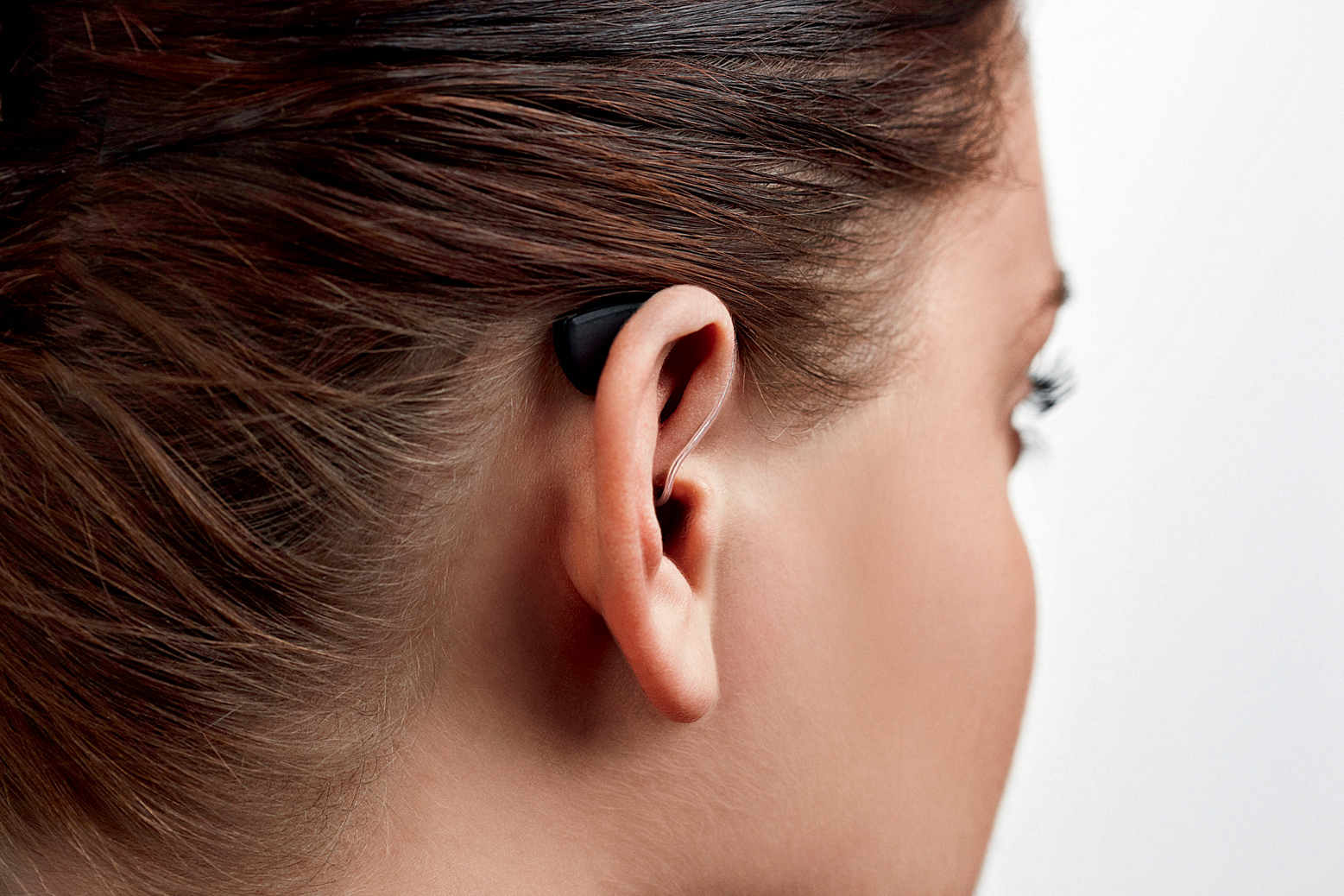
Use moist heat or cold packs. Apply an ice pack to the side of your face and temple area for about 10 minutes. Do a few simple jaw stretches (if your dentist or physical therapist OKs them). When you’re done, hold a warm towel or washcloth to the side of your face for about 5 minutes. Perform this routine a few times each day.
Eat soft foods. Add yogurt, mashed potatoes, cottage cheese, soup, scrambled eggs, fish, cooked fruits and vegetables, beans, and grains to your menu. Cut foods into small pieces so you chew less. Skip hard, crunchy foods (like pretzels and raw carrots), chewy foods (like caramels and taffy), and thick or large bites that require you to open wide.
Continued
Avoid extreme jaw movements. Keep yawning and chewing (especially gum or ice) to a minimum and don’t yell, sing, or do anything that forces you to open wide.
Don’t rest your chin on your hand. Don’t hold the phone between your shoulder and ear. Practice good posture to reduce neck and facial pain.
Keep your teeth slightly apart as often as you can. This will relieve pressure on your jaw. Put your tongue between your teeth to control clenching or grinding during the day.
Learn relaxation techniques to help loosen up your jaw. Ask your dentist if you need physical therapy or massage. Consider stress reduction therapy as well as biofeedback.
Traditional Treatments
Talk to your dentist about these tried-and-true treatments for TMD:
Medications. Your dentist can prescribe higher doses of NSAIDs if you need them for pain and swelling. They might suggest a muscle relaxer to relax your jaw if you grind or clench your teeth. Or an anti-anxiety medication to relieve stress, which may bring on TMD. In low doses they can also help reduce or control pain. Muscle relaxants, anti-anxiety drugs, and antidepressants are available by prescription only.
Continued
A splint or night guard.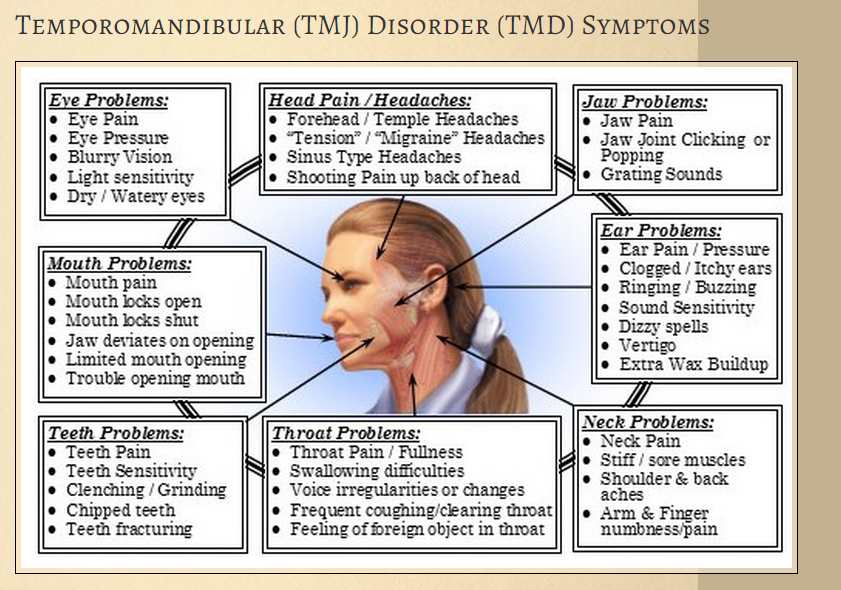 These plastic mouthpieces fit over your upper and lower teeth so they don’t touch. They lessen the effects of clenching or grinding and correct your bite by putting your teeth in a more correct position. What’s the difference between them? You wear night guards while you sleep. You use a splint all the time. Your dentist will tell you which type you need.
These plastic mouthpieces fit over your upper and lower teeth so they don’t touch. They lessen the effects of clenching or grinding and correct your bite by putting your teeth in a more correct position. What’s the difference between them? You wear night guards while you sleep. You use a splint all the time. Your dentist will tell you which type you need.
Dental work. Your dentist can replace missing teeth and use crowns, bridges, or braces to balance the biting surfaces of your teeth or to correct a bite problem.
Other Treatments
If the treatments listed above don’t help, your dentist may suggest one or more of the following:
Transcutaneous electrical nerve stimulation (TENS). This therapy uses low-level electrical currents to provide pain relief by relaxing your jaw joint and facial muscles. It can be done at the dentist’s office or at home.
Ultrasound. Deep heat applied to the joint can relieve soreness or improve mobility.
Continued
Trigger-point injections. Pain medication or anesthesia is injected into tender facial muscles called “trigger points” to give relief.
Radio wave therapy. Radio waves stimulate the joint, which increases blood flow and eases pain.
Low-level laser therapy. This lowers pain and inflammation and helps you move your neck more freely and open your mouth wider.
Surgery for TMD
If other treatments can’t help you, surgery is an option. Once it’s done, it can’t be undone, so get a second or even third opinion from other dentists.
There are three types of surgery for TMD. The type you need depends on the problem.
Arthrocentesis is used if you have no major history of TMJ but your jaws are locked. It’s a minor procedure that your dentist can do in their office. They’ll give you general anesthesia, then insert needles into the joint and wash it out. They may use a special tool to get rid of damaged tissue or dislodge a disc stuck in the joint, or to unstick the joint itself.
Continued
Arthroscopyis surgery done with an arthroscope. This special tool has a lens and a light on it. It lets your doctor see inside your joint. You’ll get general anesthesia, then the doctor will make a small cut in front of your ear and insert the tool. It’ll be hooked up to a video screen, so they can examine your joint and the area around it. They may remove inflamed tissue or realign the disc or joint. This type of surgery, known as minimally invasive, leaves a smaller scar, has fewer complications, and requires a shorter recovery time than a major operation.
Continued
Open-joint surgery. Depending on the cause of the TMD, arthroscopy may not be possible. You may need this type of surgery if:
- The bony structures in your jaw joint are wearing down
- You have tumors in or around the joint
- Your joint is scarred or full of bone chips
You’ll get general anesthesia, then the doctor will open up the entire area around the joint so they can get a full view and better access. You’ll need longer to heal after open-joint surgery, and there is a greater chance of scarring and nerve injury.
TMJ Ear Pain | Dentist Beverly MA | Exceptional Dental
TMJ ear pain
TMJ disorders can cause pain in the ears as well as pain in the jaw, neck and shoulders. It’s comforting for most patients to learn that TMJ ear pain is very treatable. A
conversation with an expert TMJ dentist can help to establish the exact cause of this pain as TMJ causes vary from patient to patient, and choose the best course of action to
relieve the discomfort and achieve eventuac l recovery.
How the ear is connected to the jaw
Ears are dynamic organs, they’re controlled by muscles just like the rest of the face. One way to demonstrate this is to place your finger firmly inside of your ear and then
widely open and close your jaw.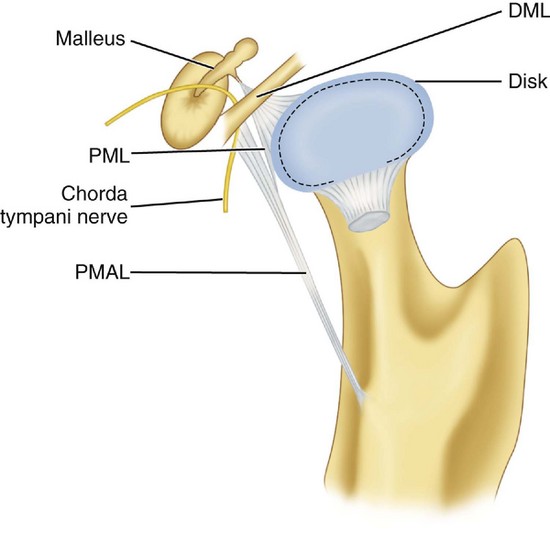 Do you feel the movement? When one is on an airplane and an uncomfortable level of pressure builds up inside the ears’ eustachian tubes, passengers
Do you feel the movement? When one is on an airplane and an uncomfortable level of pressure builds up inside the ears’ eustachian tubes, passengers
often reach for a stick of gum. This is because the act of moving the jaw muscles can help relieve the ear pressure build-up.
How TMJ disorders lead to ear pain
Because the temporomandibular joint is very closely connected to the muscles that control the ears, a misalignment or malfunction puts pressure on the muscles that both surround and
control the ears and in turn can place excess pressure on the ear’s nerves. Also, the pain of TMJ disorder is sometimes transferred directly to the ears as opposed to its origin
point in the jaw.
Finding the unique cause of your pain will help to determine which course of treatment will be used, so a TMJ dentist such as Dr. Benjamin Polan in Beverly, MA will conduct a
very thorough patient history and physical examination to discover the underlying problems.
Symptoms of TMJ ear pain
Here are some listed symptoms potentially caused by TMJ:
- Sharp shooting pain in ear
- Dull aching pain in ear
- Feeling of fullness in the eustachian tubes, similar to the discomfort of ears popping
- Pain in ears when chewing
- Pain in ears when speaking
- Ringing or other unusual noises in ears
How your TMJ dentist can help
Once the cause of your specific TMJ ear pain is discovered, your dentist can offer many different options for treatment which can sometimes require nothing more than hot and cold
compresses, muscle relaxants or pain relievers. A specially designed night-guard designed to prevent tooth-grinding may also provide substantial relief. In extreme cases surgery may
help as well, but should be considered last after all other treatment options have failed.
Dr. Benjamin Polan in Beverly, MA specializes in neuromuscular dentistry and the treatment of TMJ ear pain. His experienced and friendly staff will explain the possible causes of
His experienced and friendly staff will explain the possible causes of
your pain and work with you to decide the best course of action for your unique situation and guide you on your journey to recovery.
Don’t Ignore These Five Signs of TMJ
Waking up with a migraine or headache every morning is not normal and is usually a sign that something else is going on. One of the causes of frequent headaches and migraines is actually TMD. In fact, nearly 40% of patients diagnosed with TMD suffer from frequent migraines and headaches. If you find yourself suffering from migraines and headaches several times a week, it might be a good idea to schedule an appointment with a TMJ dentist to receive an evaluation.
[/fusion_text][/fusion_builder_column]
2. Popping or Clicking Sounds
When you open or close your mouth, do you hear a popping or clicking sound in your jaw? If so, this is another sign you might have a TMJ disorder. The popping and clicking noise is actually the sound of the disc inside the TM joint shifting out of position.
3. Worn, Cracked, or Broken Teeth
When the jaw joints, muscles, and teeth do not work in harmony, an imbalance occurs in the bite. When your top and bottom teeth come together, the misalignment can cause excessive pressure on certain teeth which can cause worn, cracked, or broken teeth. In addition, patients with TMJ disorders also tend to clench or grind their teeth, which can also lead to worn, cracked, or broken teeth. If you visit your dentist regularly for cleanings, they will usually tell you if they see signs of wear from clenching and grinding.
4. Tinnitus, Clogged Ears, or Ear Pain
Since the TM joint resides adjacent to the ears, it’s common to experience many TMJ symptoms in the ears. Patients can experience ear pain or clogged ears that they might pass off as an ear infection or allergies but is actually from TMD. TMD can also cause tinnitus (ringing in the ears from nerve irritation). If your ears regularly have pain, stuffiness, or ringing, it’s best to get examined for TMJ.
If your ears regularly have pain, stuffiness, or ringing, it’s best to get examined for TMJ.
5. Jaw, Neck, Shoulder, Head Pain
The last common signs you have a TMJ disorder is pain in various locations in your body. Most patients will experience pain in their jaw and on their head, specifically in their temples, but it can also occur in the shoulders and neck. Patients might even feel sinus or eye pain and pressure. The pain travels to all these different locations because the TM joint is located near all of the nerves that connect to these different areas. The muscles in the face are also all connected to the muscles in the neck and shoulders. When the TM joint isn’t working correctly, pain can have a domino effect throughout your body.
Get TMJ Treatment in Lee’s Summit, MO
Now that you know about some of the biggest symptoms of TMJ disorders, you can contact our TMJ dentists in Lee’s Summit for an evaluation if you notice any symptoms. Please call (816) 795-1000 today to schedule a consultation for TMJ treatment. If we do diagnose you, we will create a custom treatment plan to help you manage your symptoms.
[/fusion_builder_row][/fusion_builder_container]
Do You Have An Ear Infection or Suffer From TMJ?
One of the problems with TMJ is that it can be hard to diagnose. TMJ has so many symptoms that many of them overlap with other common conditions. People are commonly misdiagnosed with these other conditions and may be treated for them, unsuccessfully, for years before getting a proper diagnosis of TMJ.
One of these conditions that overlaps significantly with TMJ is an ear infection. Nearly 80% of people with TMJ report ear symptoms , with ear pain being the most common. If you have ear infection symptoms that persist, recur, or don’t respond to treatment, you may have TMJ.
Ear Infections Are Uncommon with Adults
For children, ear infections are common. For adults, they are much less so. Even if you used to get ear infections commonly as a child, you’re less likely to get them now.
An ear infection occurs when bacteria or a virus makes it into your middle ear. They multiply there, and they can attack the tissue there and create fluid that clogs the ear and interferes with function.
Most often, an ear infection is an offshoot from another type of illness, such as a cold or flu.
Overlapping Symptoms
It’s understandable that people might confuse these two conditions because they can have some important overlapping ear symptoms. Both conditions can cause:
- Ear pain
- Diminished hearing
- Tinnitus
- Sensations of ear fullness
And if you have a history of ear infections, you’re especially likely to think you have an ear infection and may not consider that there could be another cause.
Ear Pain Is Common in TMJ
The link between TMJ and ear pain goes beyond the simple fact that the temporomandibular joint is so close to the ear. In fact, the temporo- part of the joint is the temporal bone, which houses the inner ear. However, there are strong functional connections between these two systems. Two of the tiny bones that make up our hearing system (the malleus and incus) evolved from the jaw bones that let snakes and other reptiles dislocate their jaws to eat large prey. These bones retain some of their muscle connections to the jaw, so when the jaw isn’t functioning properly, it can interfere with ear function, too, leading not just to ear pain, but tinnitus, dizziness, and feelings of ear fullness.
Plus, the nerves that run from the ear to the brain might experience pressure from swollen or displaced jaw bones or muscles.
Distinguishing Conditions
However, there are signs you can look for that will help you distinguish between these two conditions. An ear infection is more likely if you:
- Have or recently recovered from a cold or the flu
- Experience discharge coming from your ear
- Have a fever or localized warmth
Because an ear infection is likely related to a prior illness, having ear pain after another illness is an important factor. And TMJ isn’t going to cause ear discharge. Remember, discharge can come from your ear or from your eustachian tubes. A fever or localized warmth are related to the activity of bacteria or your body’s immune response.
And TMJ isn’t going to cause ear discharge. Remember, discharge can come from your ear or from your eustachian tubes. A fever or localized warmth are related to the activity of bacteria or your body’s immune response.
- Have been cleared by a doctor as not having an infection
- Experience other TMJ symptoms such as headache or tooth damage
- Have symptoms that relate to jaw activity
If you have ear symptoms, it’s not a bad idea to see an ENT about them. But if your ENT says you don’t have an ear infection, your next stop should be a TMJ dentist. Especially if you’re experiencing TMJ symptoms like headache, tooth damage, and more that aren’t associated with ear infection.
But perhaps you’ve never been to see a doctor because your symptoms always go away quickly. In that case, look for a pattern for when they recur. If they tend to recur after periods of intense jaw activity, then you should consider TMJ.
If you think that TMJ might be causing your ear pain and related symptoms , please call (248) 480-0085 today for an appointment with TMJ dentist Dr. Jeffrey S. Haddad at the Michigan Center for TMJ & Sleep Wellness.
What Causes TMJ To Flare Up?
An issue with your temporomandibular joint — TMJ for short — can ruin your life, or at least it feels like that. TMJ issues are painful, and it can lead to nagging discomfort since you move your jaw with basically every movement that you make. Whenever you eat, drink, talk, yawn or do just about anything with your mouth, your TMJ is hard at work. But what causes TMJ to flare up, and what can you do about it the next time you have a searing pain?
The first step is to properly diagnose a TMJ flare up or issue. Since TMJ symptoms include intense headaches and ear pain, which are shared across many other conditions, TMJ can be hard to diagnose, at least in the early stages where the sudden onset of pain and discomfort can take you by surprise. Unfortunately, the only way todetermine whether you have TMJ is to see a doctor and get a TMJ diagnosis, so if you’re wondering what causes TMJ to flare up, you might need the expertise of a doctor.
Unfortunately, the only way todetermine whether you have TMJ is to see a doctor and get a TMJ diagnosis, so if you’re wondering what causes TMJ to flare up, you might need the expertise of a doctor.
The good news is that with proper care, you can decrease the intensity of your TMJ flare ups, as well as reduce their duration. With luck, you may even be able to avoid them altogether.
TMJ Flare Up Symptoms
Typically, a TMJ flare up is when you encounter new symptoms or your symptoms suddenly increase in severity. Common symptoms of TMJ flare ups include: jaw joint pain that is constant or that comes and goes; general jaw pain; frequent headaches that throb or pierce; clicking or popping of the jaw whenever you open your mouth, eat or talk; ear pain, which can range from a sharp, stabbing pain to a dull ache; neck and shoulder pain; tinnitus, or ringing in the ears; muscle spasms that may include eye, cheek or neck twitching; facial swelling around the TMJ; and tightness in the jaw, which can limit your range of motion or manifest itself as lock jaw where your jaw is unable to move until the joint is realigned by a professional.
Causes of TMJ Flare Ups
While TMJ can strike at any time, what causes TMJ to flare up is as varied as the people that have it. Triggers may also affect the duration and intensity of a TMJ flare up, so be sure to avoid your known triggers if you’ve been living with TMJ for a period of time. That said, the main causes of TMJ flare ups are stress, which can lead to jaw clenching or bruxism (teeth grinding) while you’re asleep or awake; hormonal changes, such as those brought on by birth control or supplements; hard and chewy foods, which can strain the already stressed TMJ and includes foods such as apples, bagels, gummies and nuts; dehydration that can deny the TMJ of much needed joint lubrication; poor posture, which can throw your lower jaw forward, disrupting the normal operation of your jaw muscles; weak neck muscles that can put an undue strain on your TMJ; certain medications that promote grinding and clenching; as well as a vitamin D deficiency that can bring on muscle pain.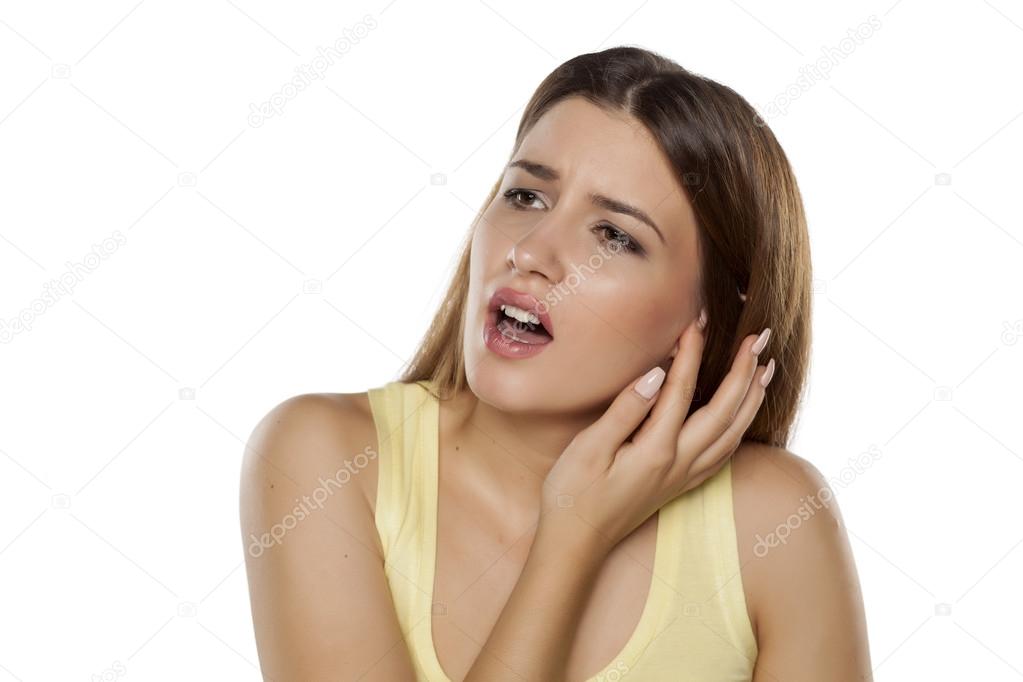
Look to The Experts
If you are suffering from debilitating TMJ pain, contact the experts at Raleigh TMJ. We have the resources and the know-how to help you treat and cope with your TMJ flare ups, and you just might find that over time your TMJ has reduced in intensity or duration. Schedule an appointment with a specialist today.
TMJ Next Generation | California Head & Neck Specialists
Do you have TMJD – Temporomandibular Joint Disorder?
Temporomandibular Joint Disorder, or TMJD, is a group of painful conditions that affect the jaw joint and surrounding muscles and nerves. Although TMJ Disorder is not life threatening, it can be detrimental to quality of life since the symptoms can become chronic and difficult to manage. People with TMJ disorders may exhibit a variety of symptoms including:
- Pain in the chewing muscles and/or jaw joint soreness
- Radiating pain in the face, jaw or neck
- Jaw muscle pain or stiffness
- Aching pain in and around ears
- Difficulty chewing or discomfort while chewing
- Limited movement or locking jaw
- Painful jaw clicking, popping or grinding when opening or closing the mouth
- Headaches or Migraines
- A change in the way the upper and lower teeth fit together
Who is affected by TMJD?
According to the National Institutes of Health, Temporomandibular Joint Disorders (TMJD) may afflict more than an estimated 35 million Americans.1 Those affected by TMJ Disorder are usually between 20 and 40 years of age. Even though both men and women experience these disorders, women seem to be affected by TMJD more often than men. In fact, the majority of those seeking treatment for TMJD pain are women in their childbearing years and the ratio of women to men increases with the severity of symptoms.
The Better Solution – TMJ NextGeneration™
The TMJ NextGeneration™ Device is a medical device that treats the Temporomandibular Joint at its nearest access point – the ear canal. It consists of two custom-made, hollow ear canal inserts that fit in the ear canals. Because they are hollow, the inserts permit full passage of sound. When in place, the inserts rest in the outer part of the ear canal and have small retraction posts that allow for easy removal. The device is easy for the patient to insert and remove. When inserted in the ear it is practically invisible from the outside.
It consists of two custom-made, hollow ear canal inserts that fit in the ear canals. Because they are hollow, the inserts permit full passage of sound. When in place, the inserts rest in the outer part of the ear canal and have small retraction posts that allow for easy removal. The device is easy for the patient to insert and remove. When inserted in the ear it is practically invisible from the outside.
- Ear canal inserts customized for each patient
- Ideal for daytime use – does not interfere with eating and talking
- Comfortable and discreet
- FDA cleared
How does the TMJ NextGeneration™ device work?
The ear canal is located very close to the temporomandibular joint (TMJ) and the shape of the ear canal changes somewhat when the jaw is opened or closed through movements such as chewing, smiling, and speaking. The device uses this anatomical change to provide a unique near field TMJD treatment.
The TMJ NextGeneration™ Device can be up to or greater than 20% larger in its dynamic geometry than the ear canal when in a jaw closed position. It is this change in volume or ear canal space that is believed to apply subtle pressure against the walls of the ear canal and by proximity to the TMJ and surrounding muscle and nerve tissue; encouraging the patient to return to the “open bite” position minimizing the tendency to clench the jaw and tense the surrounding muscles.
90,000 What is temporomandibular joint dysfunction (TMJ): symptoms and treatment
This term refers to a disruption in the functioning of the joint connecting the upper and lower jaws. By its structure, it is one of the most complex joints: it provides movement of the lower jaw forward, backward and from side to side. Any problem that interferes with the normal functioning of this complex system of muscles, ligaments, cartilaginous discs and bones is called TMJ dysfunction. In case of dysfunction, the temporomandibular joint often clicks, and the jaw may even “jam” at some moments. In many cases, the exact cause of the problem cannot be determined.
In many cases, the exact cause of the problem cannot be determined.
What are the symptoms of TMJ dysfunction?
Temporomandibular joint dysfunction has many signs and symptoms, but it is often difficult for patients to understand that it is a malfunction of this joint, since all these symptoms can be associated with other problems. By examining the history, clinical examination, and x-rays, the dentist can make a more accurate diagnosis.
The most common symptoms of TMJ dysfunction include:
- headaches (often similar to migraines), ear pain, discomfort and pressure behind the eyes;
- pain that occurs when a person yawns, opens his mouth wide, or chews;
- “jammed” or skewed jaw;
- soreness of the muscles of the jaw;
- sudden change in occlusion (closing of the teeth of the upper and lower jaw).
90,010 clicks when opening or closing the mouth;
How to treat TMJ dysfunction?
Although there is no universal treatment for TMJ dysfunction, there are treatments that can significantly alleviate the severity of symptoms. Your dentist may recommend the following:
- Try to relieve muscle cramps and pain with warm compresses, muscle relaxants, aspirin, over-the-counter pain relievers, or anti-inflammatory drugs.
- If TMJ dysfunction is associated with bruxism (the habit of grinding teeth), use a special occlusal splint or night guard.Such a device is made individually, is put on the teeth and does not allow clenching them in a dream;
- Learn relaxation techniques to control jaw muscle tension. The dentist may recommend that you attend an appropriate training session or see a psychologist to relieve stress;
- for lesions of the temporomandibular joints and ineffectiveness of other methods of treatment, surgical intervention may be indicated.

|
Dislocation of the temporomandibular joint (TMJ)
What is TMJ dislocation?
The temporomandibular joint (TMJ) is located just in front of the lower part of the ear. It provides movement of the lower jaw. The temporomandibular joint has a hinge device, similar to the shoulder and hip joints. When the mouth opens wide, the articular head (called the condyle) emerges from the glenoid fossa and moves forward.When the genus closes, the articular head returns to its place.
A TMJ dislocation occurs when the condyle is pulled too far, gets stuck in front of a part of the bone called the articular tubercle, and cannot snap into place. This most often occurs as a result of a weakening of the ligaments that are designed to hold the condyle in place. In this case, adjacent muscles often cover convulsions and they hold the condyle in a displaced position.
Symptoms
The jaw is stuck open and you cannot close your mouth.This inconvenience persists until the joint returns to the correct position.
Diagnosis
The dentist makes a diagnosis based on the position of the jaw and the patient’s ability to close the mouth. X-ray examination is used to confirm the clinical diagnosis.
Expected duration of dislocation
The inconvenience persists until the joint returns to the correct position.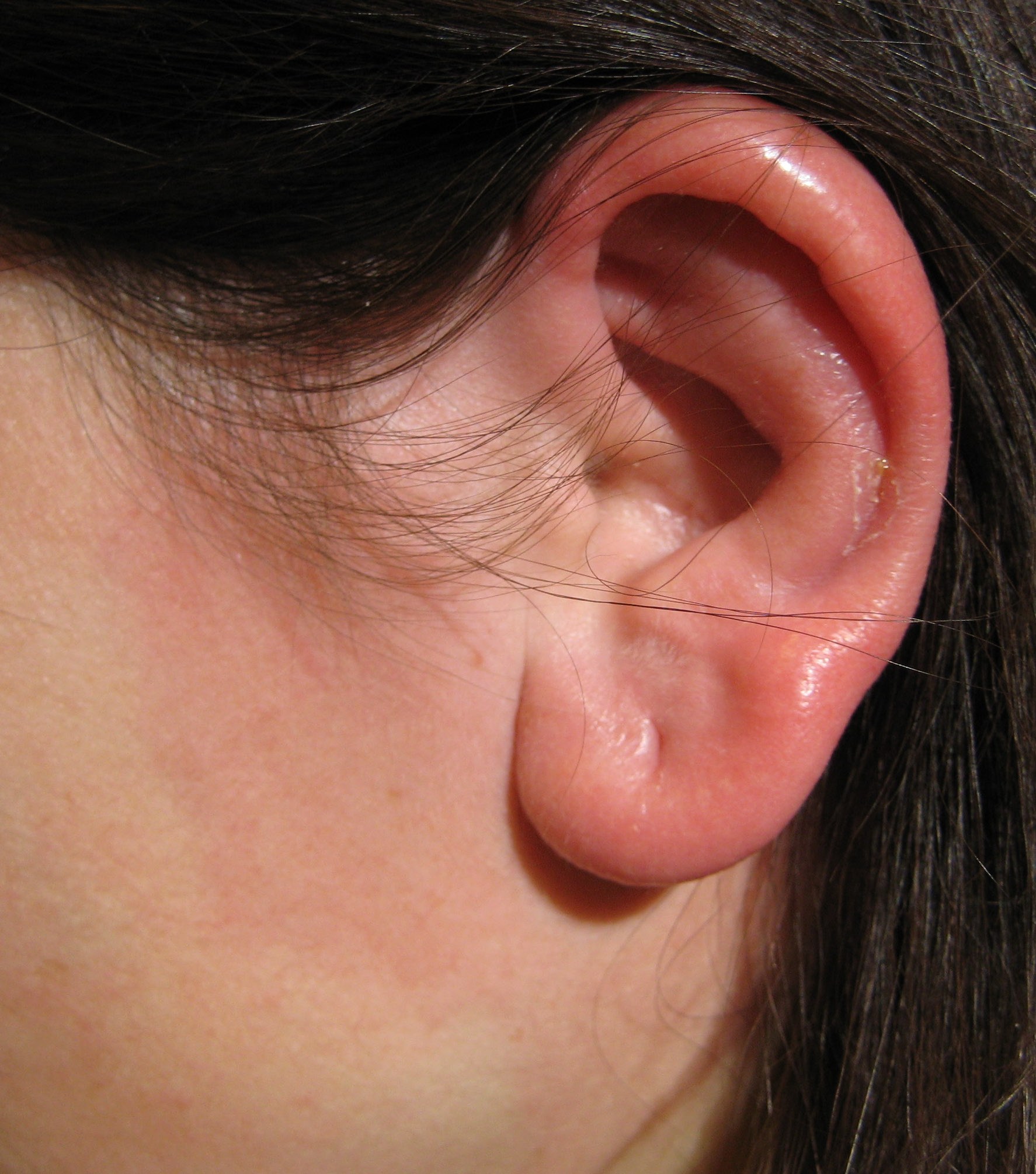 However, the surrounding tissue may remain hypersensitive for several weeks.
However, the surrounding tissue may remain hypersensitive for several weeks.
Prevention
Dislocation of the TMJ may recur in people with weakened joint ligaments. To prevent such cases from occurring too often, dentists recommend limiting the width of the jaw opening. For example, a person with a similar problem should prop up their chin with a fist when yawning to prevent their mouth from opening too wide.
Traditional surgical treatments can prevent dislocation from recurring.In some patients, the jaws are held in a closed position with a wire for a specified period. This helps to strengthen the ligaments and limits their movement.
In certain cases, surgery may be required. One of the procedures is called eminectomy. It involves the removal of the articular tubercle so that the articular head can no longer get stuck in front of it.
Treatment Procedure
To return the condyle to the correct position, the muscles around the temporomandibular joint must be relaxed.For this, some people require an injection of a local anesthetic into the jaw joint, which may be followed by an injection of a special drug, such as diazepam, to relieve tension and stop seizures. The muscle relaxant is injected intravenously (into the vein of the cubital fossa).
When the jaw muscles are sufficiently relaxed, the surgeon or dentist can return the condyle to the correct position. To do this, he pulls down the lower jaw and puts pressure on the chin from the bottom up to release the condyle.After that, the articular head returns to the glenoid fossa.
In rare cases, the dislocation needs to be repaired in the operating room under general anesthesia. Thereafter, the jaws are sometimes wired in a closed position or an elastic splint is placed between the upper and lower teeth to restrict the movement of the jaw after the dislocation has been repositioned.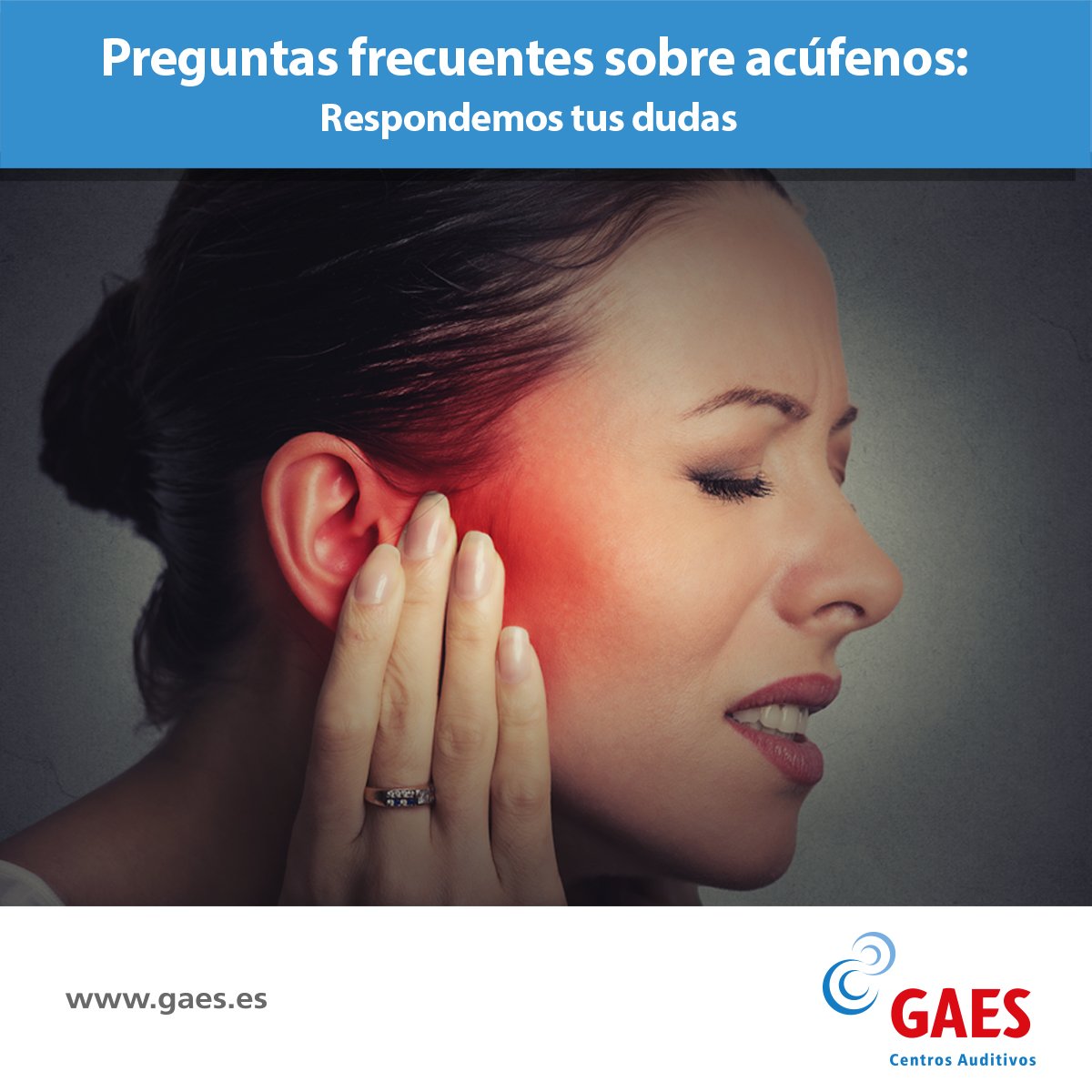
For several weeks after the dislocation has been repaired, it is required to eat only soft or liquid food – this will reduce the movement of the lower jaw and the pressure on it.Avoid chewing hard foods such as tough meats, carrots, hard caramel, and ice cubes. Also, try not to open your mouth too wide.
When do you need to see a specialist?
If you have a dislocated TMJ, see your doctor, dentist, or hospital emergency department right away to get your joint back. You may be referred to a dental or oral surgeon for treatment.
Prognosis
The prognosis for the return of the displaced articular head to the glenoid fossa is very favorable.However, in some people, joint dislocation may recur. In such cases, surgery may be required.
© 2002-2013, Aetna, Inc. All rights reserved.
© 2002-2018 Aetna, Inc. All rights reserved.
Temporomandibular joint dysfunction
The connection of the lower jaw to the skull occurs due to the temporomandibular joint (in the English-language literature – TMJ Temporomandibular joint).This is a paired joint that is located in front of the ears.
When it doesn’t work properly or causes pain, doctors use the term temporomandibular joint dysfunction.
Problems in the joints or nearby muscles can lead to TMJ dysfunction. Your doctor can give you more information about the tests you need and your treatment options.
Temporomandibular joint dysfunction symptoms may include:
- jaw pain
- neck pain
- headaches
- ear pain
- limiting the volume of opening the mouth, clenching the jaws
- accompanied by pain, sounds in the jaw area: clicking, cracking or creaking.
To find out the cause of the dysfunction, your doctor will need to evaluate many parameters:
Review of dental, medical history of the disease; especially where there is information about chronic pain syndrome of any other localization
Drawing up a short socio-psychological history
Objective examination of the head and neck, including muscles, nerves, TMF joints and mouth
Additional testing, which may include X-ray, CT, MRI, laboratory tests, diagnostic injections, or other tests
Studies have shown that dysfunction is most often caused by a combination of several factors that can act simultaneously, including jaw injuries or joint diseases:
Jaw injury.
 Occurs when a blow to the jaw is received or when the mouth is wide open while eating, prolonged dental procedures, or the introduction of a breathing tube during anesthesia
Occurs when a blow to the jaw is received or when the mouth is wide open while eating, prolonged dental procedures, or the introduction of a breathing tube during anesthesiaAbnormal habits. Gritting, grinding your teeth, biting your nails, and chewing gum can lead to dysfunction in some people.These habits can make it difficult to deal with pain.
Bite. Research has shown that malocclusion is rarely the cause of dysfunction.
Psychological factors. Emotional stress, depression and anxiety have been shown to increase pain.
Prescription drugs. Certain medications can increase muscle tension, which in turn increases pain.
Diseases of the joints.There are diseases that involve connective tissue, including the TMJ structures, in the pathological process.
Pain with dysfunction can come both from the structures of the TMJ itself, and from the muscles that move the lower jaw. That is why examination of the muscles of the head and neck is mandatory.
Normal Anatomy of the TMJ
Temporomandibular joint (TMJ) causes the movement of the lower jaw up and down and from side to side. There is a shock-absorbing disc between the head of the lower jaw and the skull, which moves with the jaw and protects the bones at the time of opening, closing the mouth.
TMJ arthritis
The condition of the bones and surrounding soft tissues of the joint can deteriorate over time in the presence of a condition known as arthritis. Arthritis can be caused by joint wear and tear or traumatic injury. Osteoarthritis is more common in older people. But the TMJ can also be involved in the systemic process in rheumatoid arthritis.
Intra-articular tissue can be damaged and painful when trying to move the jaw to talk or eat, and as a result, lead to jaw adhesion or blockage when trying to open the mouth.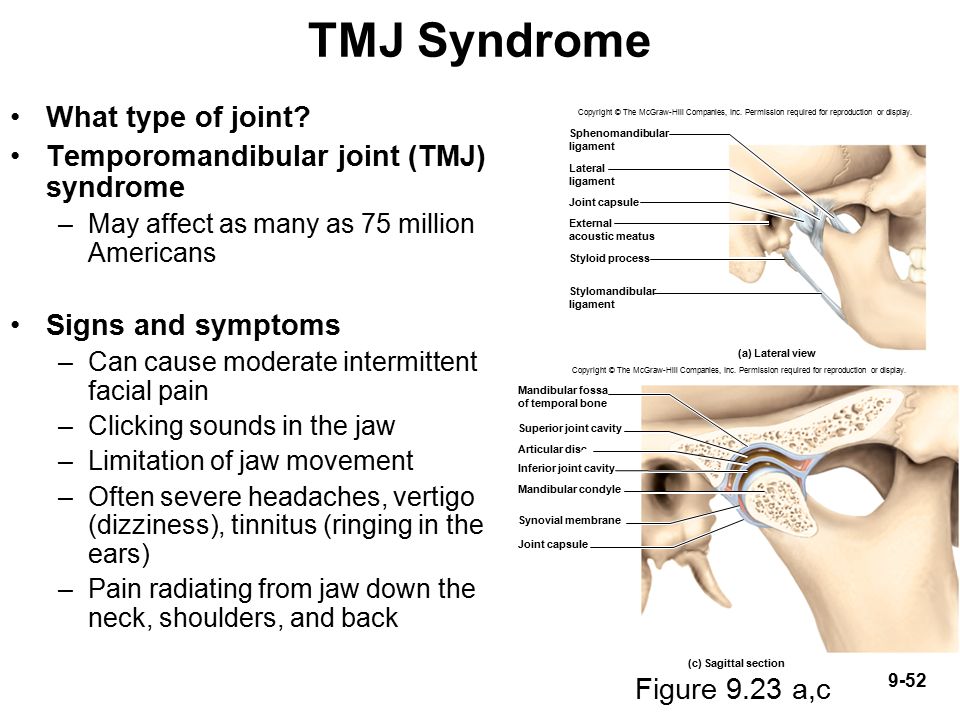
Temporomandibular joint muscles
The chewing muscles attach your jaw to your skull. They provide movement of the jaw while talking, eating, etc.
Like other muscles, any of these can become sore or tense due to increased use. Sometimes the brain confuses these pain signals and you may feel pain elsewhere. This can lead to widespread jaw pain, neck pain, or headache.
Self-control of the disease shall include the following items:
try to avoid clenching your teeth during the day, the jaw is relaxed; at rest, the teeth of the upper and lower jaws should not close together
Avoid chewing on non-food items such as pens, pencils, toothpicks, or nails
Avoid playing musical instruments that strain the jaw or put pressure on the jaw
Limit jaw opening during chewing or yawning to two fingers wide
Allow the jaw muscles to rest, avoid chewing gum, bagels, ice, hard meat or caramel
Use cold compresses or wet hot compresses
Massage painful muscles
Learn techniques and learn techniques for rest and relaxation
Do gentle jaw exercises as directed by your doctor or physiotherapist
Identify sleep problems and work with your doctor to improve your sleep
Record the characteristics of pain in your journal and anything that improves or worsens pain.
Write down treatments for the condition.
Treatment of dysfunction
Since there are so many possible causes of TMJ dysfunction, there is no one universal treatment. Symptoms of dysfunction can be temporary and not limited to serious consequences. Your doctor will work with you to help manage this condition. Most researchers recommend focusing on conservative and reversible therapy first.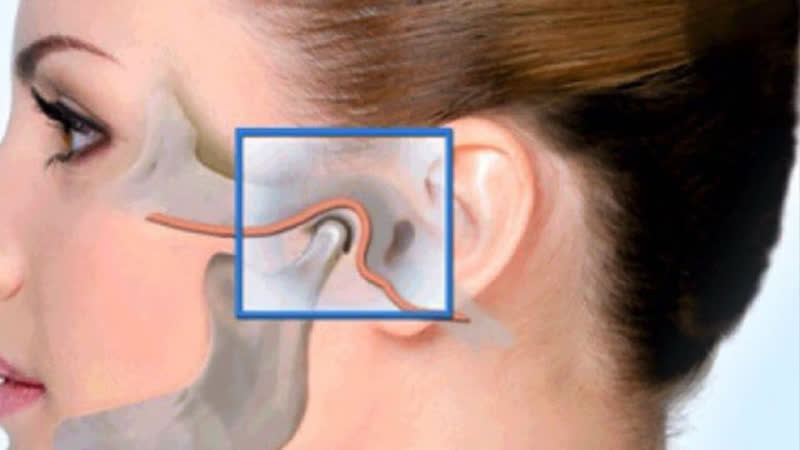 Research has shown that self-control and conservative treatments are most successful.
Research has shown that self-control and conservative treatments are most successful.
The goals of treatment are to reduce pain, increase jaw function, and limit the effects of TMJ dysfunction on daily life.
1. Self-control is one of the most successful ways to relieve pain.
Studies on the treatment and management of patients with stress have shown that reducing stress and anxiety can help reduce the severity of TMJ dysfunction symptoms.
Your doctor may recommend methods that you can use to manage stress, or they may refer you to other professionals for additional support.
2. Physiotherapy (exercise therapy).
Physical Therapists are trained professionals who assist patients in the rehabilitation of many injuries. Your health care provider will determine if exercise therapy can help reduce the manifestations of dysfunction.
3. Medicines.
Many medicines are helpful in the presence of any discomfort. Some are traditionally used to relieve pain, while others work in a different way. Your doctor will provide you with a specific treatment plan according to what needs to be done in your case.
4. Orthopedic aids.
A stabilizer or night stabilizer is known. The design will depend on your condition. It should only be used on the advice of a physician.Most orthopedic aids work to protect teeth from each other, relieve pressure on the joints of the jaw, and help relax the jaw muscles.
5. Surgical intervention.
In cases of severe, persistent pain or loss of function, surgery may be necessary. Studies have shown that in about 5 out of 100 patients with TMJ dysfunction, conservative therapy is insufficient. These patients are referred for surgical treatment.
Temporomandibular joint exercises
DIAGNOSIS OF TEMPOROMANDIBULAR ARTHROSIS BASED ON THE NEW WAY OF CT SCANS ANALYSIS | MALTCEVA
The aim of the research was to scrutinize the morphological changes in TMJ tissues and the width of the X-ray joint cavity in different parts of patients with arthrosis. It is performed by the analysis of CT scans of TMJ in 3 projections: sagittal, coronary and axial. We analyzed 36 CT scans of patients with temporomandibular arthrosis, that showed interconnection between symptoms of arthrosis, morphological changes in joint’s elements and constriction of joint cavity in different parts.
It is performed by the analysis of CT scans of TMJ in 3 projections: sagittal, coronary and axial. We analyzed 36 CT scans of patients with temporomandibular arthrosis, that showed interconnection between symptoms of arthrosis, morphological changes in joint’s elements and constriction of joint cavity in different parts.
One of the topical and poorly studied issues of dentistry is the diagnosis and treatment of patients with osteoarthritis (OA) of the temporomandibular joint (TMJ).According to Tsurko V.V., Khitrov V.A. (2000) and Akhmedova E.T. (2009), the prevalence of this pathology among all TMJ diseases is 60-70%. The diagnosis of arthrosis, at first glance, is simple, but often dentists make mistakes in making a diagnosis based on the clinical picture, believing that noise and pain in the joint area is caused by arthrosis. To confirm this diagnosis, additional research methods are required, and computed tomography (CT) of the temporomandibular joint is one of the main diagnostic methods.Purpose of the study: to study morphological changes in the tissues of the temporomandibular joint and the width of the X-ray joint space in various parts of patients with osteoarthritis using the method of analyzing computed tomograms of the TMJ in three projections: sagittal, coronary and axial. Research objectives: to identify the causes of arthrosis of the temporomandibular joint; – to determine the main clinical symptoms of TMJ OA; – to study morphological changes in the TMJ tissues using spiral computed tomography in three projections.Materials and methods of research On the basis of the Department of Prosthetic Dentistry of Samara State Medical University, 36 patients with osteoarthritis (OA) of the temporomandibular joint were diagnosed in the period from 2014 to 2016. The patients were examined according to a special map developed at the department, including subjective, objective and special research methods. Various complaints were noted: the presence of noise phenomena in the joint, the moment of their appearance, pain in the TMJ, their nature, duration, localization, irradiation, time of onset, restriction of mouth opening, the presence of muscular, otological, ophthalmic, etc. symptoms. When collecting the anamnesis, we found out the duration of the onset of symptoms, the usual side of chewing, the presence of bad habits. Objective examination began with an external examination of the face, noting the symmetry, proportionality of the sections in the state of relative physiological rest and in the central occlusion, the position of the corners of the mouth, the severity of the nasolabial and chin folds. The temporomandibular joint, temporal lobe, proper chewing, external and internal pterygoid muscles were palpated on both sides. The amplitude and nature of mouth opening were determined using a caliper and a ruler.All patients underwent computed tomography of the temporomandibular joint. Tomograms were obtained with a 32-slice multispiral tomograph Aquilion 32 (Toshiba, Japan) on the basis of the Department of Radiation Diagnostics and Radiation Therapy with the course of medical informatics of Samara State Medical University. The analysis of tomograms was carried out according to the method developed at the Department of Prosthetic Dentistry of Samara State Medical University (priority certificate No. 2015138970 (059766) dated 09/11/2015) in the positions “mouth open” and “mouth closed”, right and left, in three planes: sagittal, coronary and axial ( 288 images in total).Results of the study We examined 36 patients with osteoarthritis of the TMJ, of which 33 women (91.7%) and 3 men (8.3%) aged 31 to 74 years (the average age in the group was 53.5 years) , the largest number of patients was observed at the age of 42-59 years. All patients presented complaints typical of arthrosis of the temporomandibular joint: noise phenomena, pain in the TMJ, stiffness of the lower jaw, etc. On the basis of subjective and objective research methods, we made the following diagnoses: bilateral deforming arthrosis (22 people – 61.1%) and unilateral deforming arthrosis (14 patients – 38.9%).With bilateral TMJ OA (22 patients), all patients complained of noise phenomena in the joint on both sides, which appeared 3-10 years ago, a crunch when the jaws are tightly compressed, pain and stiffness in the temporomandibular joint, stiffness during the movements of the lower jaw in the morning, which disappeared during the day, daytime jaw clenching.
symptoms. When collecting the anamnesis, we found out the duration of the onset of symptoms, the usual side of chewing, the presence of bad habits. Objective examination began with an external examination of the face, noting the symmetry, proportionality of the sections in the state of relative physiological rest and in the central occlusion, the position of the corners of the mouth, the severity of the nasolabial and chin folds. The temporomandibular joint, temporal lobe, proper chewing, external and internal pterygoid muscles were palpated on both sides. The amplitude and nature of mouth opening were determined using a caliper and a ruler.All patients underwent computed tomography of the temporomandibular joint. Tomograms were obtained with a 32-slice multispiral tomograph Aquilion 32 (Toshiba, Japan) on the basis of the Department of Radiation Diagnostics and Radiation Therapy with the course of medical informatics of Samara State Medical University. The analysis of tomograms was carried out according to the method developed at the Department of Prosthetic Dentistry of Samara State Medical University (priority certificate No. 2015138970 (059766) dated 09/11/2015) in the positions “mouth open” and “mouth closed”, right and left, in three planes: sagittal, coronary and axial ( 288 images in total).Results of the study We examined 36 patients with osteoarthritis of the TMJ, of which 33 women (91.7%) and 3 men (8.3%) aged 31 to 74 years (the average age in the group was 53.5 years) , the largest number of patients was observed at the age of 42-59 years. All patients presented complaints typical of arthrosis of the temporomandibular joint: noise phenomena, pain in the TMJ, stiffness of the lower jaw, etc. On the basis of subjective and objective research methods, we made the following diagnoses: bilateral deforming arthrosis (22 people – 61.1%) and unilateral deforming arthrosis (14 patients – 38.9%).With bilateral TMJ OA (22 patients), all patients complained of noise phenomena in the joint on both sides, which appeared 3-10 years ago, a crunch when the jaws are tightly compressed, pain and stiffness in the temporomandibular joint, stiffness during the movements of the lower jaw in the morning, which disappeared during the day, daytime jaw clenching.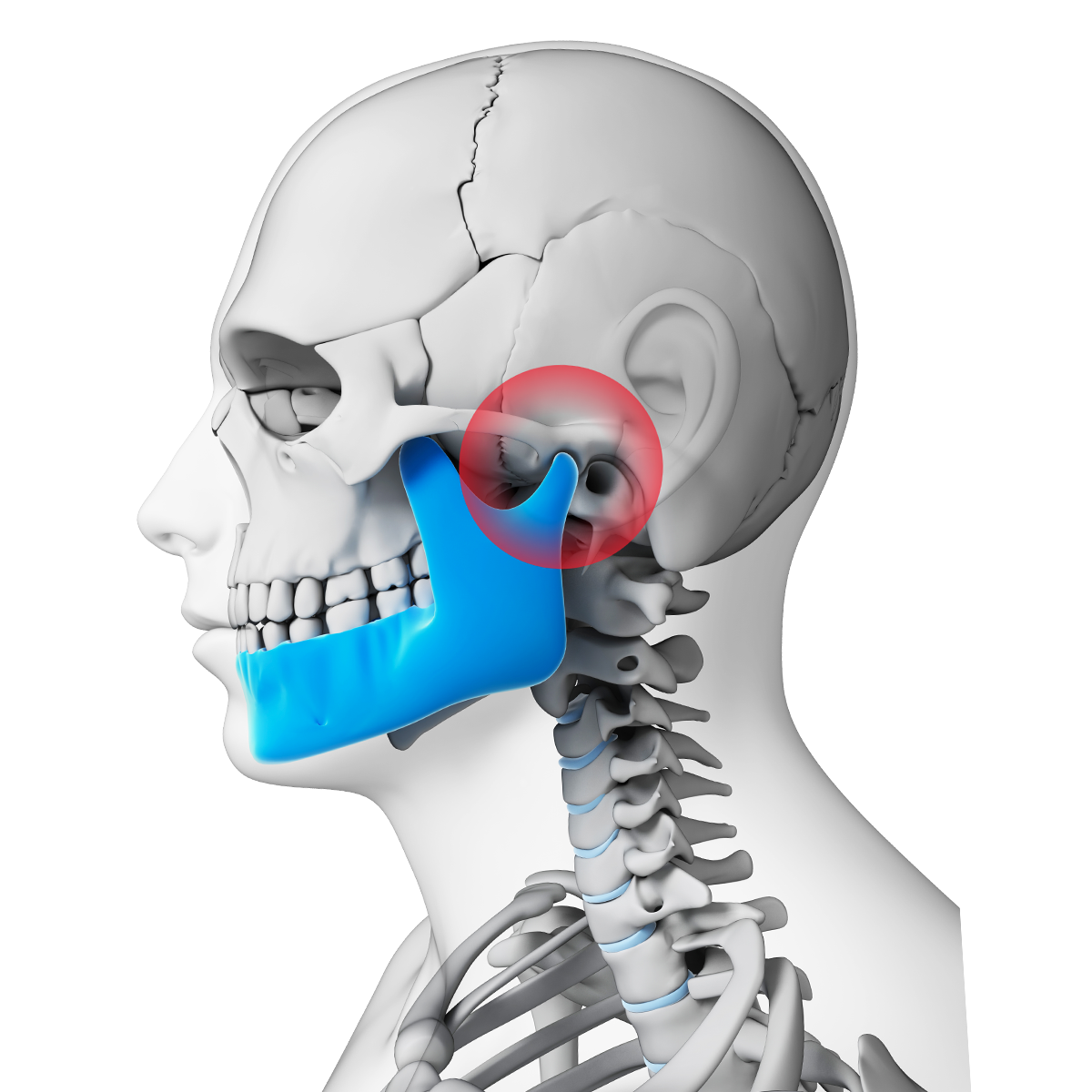 Pain in the TMJ at rest, aggravated by chewing, was noted by 7 (31.8%) patients, and 15 (68.2%) people – only when chewing. In 16 (72.7%) patients, pain radiated to the ear, temple, occiput, neck, teeth of the lower and upper jaw.The survey revealed additional symptoms (muscular, otological, ophthalmological, etc.), such as: night grinding of teeth – 8 people (36.4%), frequent headaches – 17 (72.3%), pain in the cervical spine – 16 (72.7%), fluctuations in blood pressure – 10 (45.5%), dry mouth – 9 (40.9%), pain and crunching in other joints were confirmed by 9 people (40.9%). Of the bad habits, 14 (63.6%) showed frequent consumption of solid food, 5 people (22.7%) – prolonged unilateral chewing.Incomplete orthodontic treatment was the cause of the disease in 4 (18.2%) people. During external examination, attention was paid to the nature of the movements of the lower jaw when opening and closing the mouth: in all patients, deviation of the lower jaw was revealed. With unilateral arthrosis of the temporomandibular joint (14 people), all patients complained of clicking and pain in the joint on one side, stiffness in the joint. Also, the most common symptoms were: unilateral headaches (85.7%), tinnitus and / or hearing loss on the affected side (71.4%).During the collection of anamnesis, 100% of patients revealed prolonged unilateral chewing on the affected side. On external examination, all patients showed deflexion towards the affected joint. When determining the amplitude of mouth opening between the cutting edges of the central incisors on the upper and lower jaws, all the patients under study revealed: limitation of mouth opening within 20-35 mm in 19 (52.8%) people, which was accompanied by severe pain syndrome, 40-45 mm – in 17 (47.2%) people. In 100% of patients, there was a decrease in interalveolar height by 2-5 mm, and in 14 patients (38.9%) there was a displacement of the line passing between the central incisors of the lower jaw relative to the line passing between the central incisors of the upper jaw by 0.
Pain in the TMJ at rest, aggravated by chewing, was noted by 7 (31.8%) patients, and 15 (68.2%) people – only when chewing. In 16 (72.7%) patients, pain radiated to the ear, temple, occiput, neck, teeth of the lower and upper jaw.The survey revealed additional symptoms (muscular, otological, ophthalmological, etc.), such as: night grinding of teeth – 8 people (36.4%), frequent headaches – 17 (72.3%), pain in the cervical spine – 16 (72.7%), fluctuations in blood pressure – 10 (45.5%), dry mouth – 9 (40.9%), pain and crunching in other joints were confirmed by 9 people (40.9%). Of the bad habits, 14 (63.6%) showed frequent consumption of solid food, 5 people (22.7%) – prolonged unilateral chewing.Incomplete orthodontic treatment was the cause of the disease in 4 (18.2%) people. During external examination, attention was paid to the nature of the movements of the lower jaw when opening and closing the mouth: in all patients, deviation of the lower jaw was revealed. With unilateral arthrosis of the temporomandibular joint (14 people), all patients complained of clicking and pain in the joint on one side, stiffness in the joint. Also, the most common symptoms were: unilateral headaches (85.7%), tinnitus and / or hearing loss on the affected side (71.4%).During the collection of anamnesis, 100% of patients revealed prolonged unilateral chewing on the affected side. On external examination, all patients showed deflexion towards the affected joint. When determining the amplitude of mouth opening between the cutting edges of the central incisors on the upper and lower jaws, all the patients under study revealed: limitation of mouth opening within 20-35 mm in 19 (52.8%) people, which was accompanied by severe pain syndrome, 40-45 mm – in 17 (47.2%) people. In 100% of patients, there was a decrease in interalveolar height by 2-5 mm, and in 14 patients (38.9%) there was a displacement of the line passing between the central incisors of the lower jaw relative to the line passing between the central incisors of the upper jaw by 0. 5 – 2.5 mm towards the affected joint.On palpation of the temporomandibular joint and masticatory muscles: 27 (76%) people indicated pain on palpation of the joint area, all patients noted pain on palpation of the lateral and medial pterygoid muscles, of which 24 (66.7%) also indicated pain in the actual masticatory and temporal muscles. When examining the oral cavity, partial absence of teeth was observed in 32 (88.9%) patients (unilateral end defects – 15, bilateral – 17 people), and 4 (11.1%) patients showed a deep bite, underdevelopment of the alveolar process in the masticatory region. teeth with intact dentition.When analyzing CT, morphological changes were observed in the form of: bilateral deforming changes in the articular head and articular tubercle, usures, subchondral cysts in 22 (61.1%) patients, unilateral deformities on the affected side and sclerosing changes in the cortical plate on the “healthy” side in 14 ( 38.9%) patients. In the analysis of CT of the temporomandibular joint according to our technique in the sagittal, coronary and axial planes in the “mouth closed” position, bilateral narrowing of the joint space (D3, D4, D5, D6, D7) was observed in 22 (61.1%) patients with a decrease in the height of the lower part faces.Of all examined, 14 (38.9%) people had displacements of the articular heads in the axial plane of more than 1.5 mm. The average size of the joint space in different sections in bilateral osteoarthritis did not differ significantly, but narrowing of the joint space was revealed in sections D3, D4, D5, D6, D7 on both sides. The average size of the joint space in different parts of unilateral osteoarthritis was: on the affected side: D1 = 10.01 ± 1.58 mm; D2 = 2.12 ± 0.45 mm; D3 = 1.45 ± 0.42 mm; D4 = 1.94 ± 0.47 mm; D5 = 1.92 ± 0.47 mm; D6 = 1.56 ± 0.37 mm; D7 = 1.68 ± 0.36 mm; D8 = 1.72 ± 0.36 mm; on the healthy side: D1 = 9.3 ± 1.49mm; D2 = 2.39 ± 0.57 mm; D3 = 2.41 ± 0.43 mm; D4 = 2.9 ± 0.86 mm; D5 = 2.83 ± 0.66 mm; D6 = 1.72 ± 0.
5 – 2.5 mm towards the affected joint.On palpation of the temporomandibular joint and masticatory muscles: 27 (76%) people indicated pain on palpation of the joint area, all patients noted pain on palpation of the lateral and medial pterygoid muscles, of which 24 (66.7%) also indicated pain in the actual masticatory and temporal muscles. When examining the oral cavity, partial absence of teeth was observed in 32 (88.9%) patients (unilateral end defects – 15, bilateral – 17 people), and 4 (11.1%) patients showed a deep bite, underdevelopment of the alveolar process in the masticatory region. teeth with intact dentition.When analyzing CT, morphological changes were observed in the form of: bilateral deforming changes in the articular head and articular tubercle, usures, subchondral cysts in 22 (61.1%) patients, unilateral deformities on the affected side and sclerosing changes in the cortical plate on the “healthy” side in 14 ( 38.9%) patients. In the analysis of CT of the temporomandibular joint according to our technique in the sagittal, coronary and axial planes in the “mouth closed” position, bilateral narrowing of the joint space (D3, D4, D5, D6, D7) was observed in 22 (61.1%) patients with a decrease in the height of the lower part faces.Of all examined, 14 (38.9%) people had displacements of the articular heads in the axial plane of more than 1.5 mm. The average size of the joint space in different sections in bilateral osteoarthritis did not differ significantly, but narrowing of the joint space was revealed in sections D3, D4, D5, D6, D7 on both sides. The average size of the joint space in different parts of unilateral osteoarthritis was: on the affected side: D1 = 10.01 ± 1.58 mm; D2 = 2.12 ± 0.45 mm; D3 = 1.45 ± 0.42 mm; D4 = 1.94 ± 0.47 mm; D5 = 1.92 ± 0.47 mm; D6 = 1.56 ± 0.37 mm; D7 = 1.68 ± 0.36 mm; D8 = 1.72 ± 0.36 mm; on the healthy side: D1 = 9.3 ± 1.49mm; D2 = 2.39 ± 0.57 mm; D3 = 2.41 ± 0.43 mm; D4 = 2.9 ± 0.86 mm; D5 = 2.83 ± 0.66 mm; D6 = 1.72 ± 0.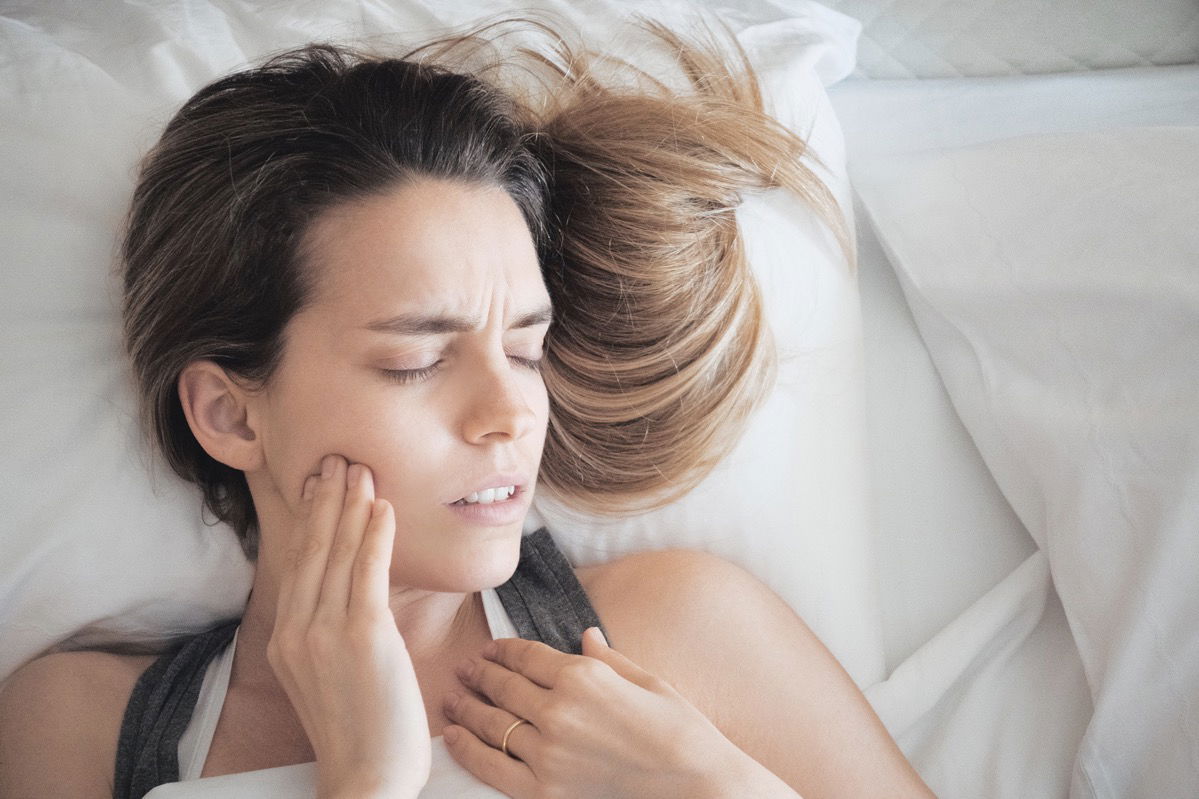 69 mm; D7 = 2.12 ± 0.46 mm; D8 = 2.2 ± 0.48 mm.On CT in the sagittal projection in the “mouth open” position: in 19 (52.8%) patients, the articular heads were detected in the lower third of the posterior slope of the articular tubercles, in 17 (47.2%) patients – at the apex of the articular tubercles. Conclusions Based on our research, it can be concluded that the causes of arthrosis of the temporomandibular joint were previously undiagnosed dysfunctional conditions of the temporomandibular joint, a decrease in interalveolar height due to unilateral and bilateral defects in the dentition, deep occlusion and / or distal displacement of the lower jaw, generalized form pathological abrasion of teeth.The main clinical symptoms of TMJ OA were noise phenomena in the joint, pain, aggravated by chewing, stiffness of the lower jaw, especially in the morning, which disappeared during the day. In bilateral TMJ arthrosis, deforming changes in the articular heads and articular tubercles are pronounced, narrowing of the joint spaces in all sections (D3, D4, D5, D6, D7) on both sides, while in unilateral pathology, narrowing of the joint space and deformation of the articular head is observed only on the side of the defeat.Unilateral damage to the joint is often the result of prolonged unilateral chewing, which is confirmed clinically by the displacement of the inter-incisal line towards the lesion, narrowing of the joint space in sections D3, D4, D5, D6, D7 on the affected side and expansion in sections D1, D2, D8, and on ” healthy “side – narrowing of the joint space in the D1, D2, D6, D8 and expansion in the D3, D4, D5, D7 sections.
69 mm; D7 = 2.12 ± 0.46 mm; D8 = 2.2 ± 0.48 mm.On CT in the sagittal projection in the “mouth open” position: in 19 (52.8%) patients, the articular heads were detected in the lower third of the posterior slope of the articular tubercles, in 17 (47.2%) patients – at the apex of the articular tubercles. Conclusions Based on our research, it can be concluded that the causes of arthrosis of the temporomandibular joint were previously undiagnosed dysfunctional conditions of the temporomandibular joint, a decrease in interalveolar height due to unilateral and bilateral defects in the dentition, deep occlusion and / or distal displacement of the lower jaw, generalized form pathological abrasion of teeth.The main clinical symptoms of TMJ OA were noise phenomena in the joint, pain, aggravated by chewing, stiffness of the lower jaw, especially in the morning, which disappeared during the day. In bilateral TMJ arthrosis, deforming changes in the articular heads and articular tubercles are pronounced, narrowing of the joint spaces in all sections (D3, D4, D5, D6, D7) on both sides, while in unilateral pathology, narrowing of the joint space and deformation of the articular head is observed only on the side of the defeat.Unilateral damage to the joint is often the result of prolonged unilateral chewing, which is confirmed clinically by the displacement of the inter-incisal line towards the lesion, narrowing of the joint space in sections D3, D4, D5, D6, D7 on the affected side and expansion in sections D1, D2, D8, and on ” healthy “side – narrowing of the joint space in the D1, D2, D6, D8 and expansion in the D3, D4, D5, D7 sections.
- Akhmedov E.T. Results of treatment of patients with arthrosis of the temporomandibular joint // Institute of Dentistry. 2009. – No. 9. – S. 72-74.
- Vasiliev A.Yu. Radiation diagnostics in dentistry: national guidelines. – M .: Geotar-Media, 2010 .– 288 p.
- Dergilev A.P., Manakova Ya.L., Sudarkina A.V. Radiation diagnosis of injuries of the temporomandibular joint // Medicine of extreme situations.
 – 2011. – No. 4 (38). – S. 23-29.
– 2011. – No. 4 (38). – S. 23-29. - Konnov V.V. Orthodontic and orthopedic treatment of adult patients with various types of temporomandibular joint: author. dis .. doc. honey. sciences. – Volgograd, 2008 .– 34 p.
- Petrosov Yu.A., Sidorenko A.N., Seferyan K.G., Kalpakyants M.P. Etiology and pathogenesis of arthrosis of the temporomandibular joint // Kuban Scientific Medical Bulletin. – 2006. – No. 5-6. – S. 76-87.
- Potapov V.P. Clinical picture and methods of treatment of patients with temporomandibular joint osteoarthritis caused by chronic microtrauma // Postgraduate Bulletin of the Volga Region.- 2010. – No. 7-8. – S. 165-167.
- Sidorenko A.N. Clinical signs, diagnosis and complex treatment of patients with deforming arthrosis of the temporomandibular joint // Kazan Medical Journal. – 2012. – T. 93. – No. 5. – S. 753-757.
- Tsurko V.V., Khitrov N.A. Osteoarthritis: pathogenesis, clinic, treatment // Attending physician. – 2000. – No. 9. – S. 30-38.
- Sanders A.E., Slade G.D. Gender modifies the effect of perceived stress on orofacial pain symptoms: National Survey of Adult Oral Health.// J Orofac Pain. 2011. 25 (4): 317-26.
- Shi J.J., Zhang F., Zhou Y.Q. et al. The relationship between partia disc displacement and mandibular dysplasia in female adolescents // Med. Sci. Monit. – 2010. – Vol. 16. – P. 283-288.
Views
Abstract – 58
PDF (Russian) – 17
Cited-By
Article Metrics
PlumX
Dimensions
Refbacks
- There are currently no refbacks.
| Executive Summary | The Study is an open-label, prospective, single-center, non-randomized feasibility study of the Bruxoff ™ device to determine EMG activity associated with bruxism and to evaluate the effect of the TMJ NextGeneration (TM) device on the occurrence of nocturnal bruxism events and the incidence of migraine and headache in diagnosed subjects bruxism in a dream. | Intervention | Intervention type: Device Intervention name: Description: The TMJ NextGeneration (TM) device consists of a pair of small, hollow ear tips. These earmolds fit each ear canal individually. The devices rest on the outer third of the ear canal and have a small retraction arm that allows the device to be removed from the ear. The devices conform to the shape of the ear canal when the jaw is in the open position and ensure that sound travels completely to each ear.The earmold’s mechanisms of action are to support the temporomandibular joint and associated secondary musculature in order to relieve tension in the temporomandibular joint and provide the wearer with cognitive awareness of parafunctional habits, i.e. jaw clenching. Arm Group label: Feasibility | Eligibility | Criteria: Inclusion Criteria: 1. Subjects at least 18 years of age; 2. Subject was diagnosed with sleep bruxism; 3. Subject underwent medical examination and diagnosed with headaches.and / or migraine; 4. Subject is willing to follow instructions for use of the Bruxoff device; 5. Knows how to read and understand ICF and has voluntarily provided written information. consent. 6. Subject may open mouth at least 17 mm to accommodate TMJ. NextGenerationTM device; 7. Male subjects desire a clean shaven face at night when the Bruxoff device is in use; 8. Subject agrees that there is a different room when using Bruxoff’s cell phone storage device.Exclusion Criteria: 1. Subjects with any physical or behavioral disorder that, in the opinion of the Principal Investigator, may interfere with device use or adherence to the study protocol; 2. Subject suffers from any sleep disorder other than bruxism; 3. Subjects with direct trauma to the jaw; 4. Subjects who have previously undergone TMJ or ear surgery; 5. Subjects with a narrow ear canal or ear canal imprint, which is prolapsed due to anatomical displacement or structural disruption of the wall of the ear canal, or a canal that does not allow identification of the second stage of the ear canal; 6. Floor: Everything Minimum age: 18 years Maximum age: There is no data Healthy volunteers: Accepts healthy volunteers | Location |
|
|---|
Treatment of TMJ dysfunction
TMJ dysfunction is a functional pathology of the temporomandibular joint caused by muscle, occlusive and spatial disorders.Dysfunction of the TMJ is accompanied by pain, clicks in the joint, limitation of the amplitude of mouth opening, tinnitus, dysphagia, bruxism, etc.
Most often, patients complain of headaches that cannot be stopped by analgesics, as well as pain in the muscles (neck, incl.) And clicking when opening the mouth. Often these pains mimic neurological symptoms, and such patients turn to neurologists, and for pain in the ear area – to otorhinolaryngologists.However, in the absence of pain, patients may not assume that they have TMJ dysfunction.
During the initial consultation, a competent orthodontist always palpates the TMJ area and the muscles of the maxillofacial region, and also reveals the presence or absence of deviation of the lower jaw, asking the patient to open and close his mouth. The presence of deviation (the patient “withdraws” the lower jaw during vertical movements), clicking and pain in the patient are clear signs of TMJ dysfunction, requiring additional diagnostic methods and more in-depth analysis to identify the cause of the dysfunction.
The presence of deviation (the patient “withdraws” the lower jaw during vertical movements), clicking and pain in the patient are clear signs of TMJ dysfunction, requiring additional diagnostic methods and more in-depth analysis to identify the cause of the dysfunction.
Methods for examining patients with TMJ dysfunction includes the study of complaints, analysis of plaster models of the jaws, orthopantomography, radiography and tomography of the TMJ, electromyography, phonoarthrography, etc.
Treatment of temporomandibular joint dysfunction is carried out taking into account the reasons and may consist in grinding the supercontacts of the teeth, correct prosthetics, bite correction, wearing a mouthguard or joint splint, and performing surgical treatment (orthognathic surgery). Sometimes the treatment of TMJ dysfunction requires a stationary regimen.
Temporomandibular joint dysfunction is often associated with a violation of the position of the lower jaw due to various reasons – dental, muscle. Before carrying out orthodontic treatment, it is necessary to determine the central ratio of the jaw bones (CA). It is necessary to determine the position of the lower jaw that is as safe and correct as possible for a given patient. Often, 90,050 splint therapy is performed before the installation of the brace system. It involves the manufacture of an individual occlusal splint (spot) and its wearing by the patient.
For the manufacture of such a mouthguard, patients are fitted with face bow – a device that allows registering the individual position of the upper jaw relative to the TMJ. Next comes the work with the articulator – device, which reproduces all the movements of the lower jaw. The joint splint is fitted by the doctor in the oral cavity, then it is constantly corrected. As a result of the splint operation, deprogramming of muscles of the maxillofacial region occurs. Then work begins with a bracket system to stabilize the resulting position of the lower jaw.
Treatment of patients with TMJ dysfunction is carried out in conjunction with an orthopedic doctor and a surgeon, and in some cases surgery is required.
In some cases, it is possible to use ready-made joint aligners of the TMJ type. Dysfunction is often eliminated by normalizing the width of the upper dentition in the process of orthodontic treatment and by normalizing the work of the muscles of the maxillary artery.
Very often, after orthodontic treatment, the patient needs rational prosthetics (placing crowns, inlays, performing restorations)! This is expressed in cases of abrasion of the teeth and a decrease in the height of the clinical crowns of the teeth, as well as in the absence of some of the teeth in the support zone.
To the question of pain relief in case of dysfunction of the temporomandibular joint :: DIFFICULT PATIENT
On pain relief in temporomandibular joint dysfunction
Journal number:
May 2012
L.N. Maksimovskaya, N.M. Fokina, E.N.Dudnik
Moscow State Dental University
I.M.Sechenov First Moscow State Medical University
P.K. Anokhin Research Institute of Normal Physiology, Moscow
Pain syndrome caused by dysfunction of the temporomandibular joint is relieved by the non-steroidal anti-inflammatory drug Nimesil®. The effectiveness of the drug has been proven in 69.05% of cases.
Keywords: temporomandibular joint dysfunction, pain, treatment, nimesulide.
Relieving pain due to temporomandibular joint dysfunction
L.N. Maximovskaya, N.M. Fokina, E.N. Dudnik
Moscow State Dentistry University I.M. Sechenov First Moscow State Medicine University
P.K. Anokhin Normal Physiology SRI
Pain caused by temporomandibular joint dysfunction could be relieved by non-steroidal anti-inflammatory drug called Nimesil®. The efficiency of this drug was proven in 69.05% cases.
Keywords: temporomandibular joint dysfunction, TMJ, pain, nimesulide.
Information about the authors:
Maksimovskaya L.N. – Doctor of Medical Sciences, Professor, FPO MGSU
Fokina N.M. – Ph.D., First Moscow State Medical University named after M.V. THEM. Sechenova
Dudnik E.N. – Candidate of Biological Sciences, Associate Professor, Research Institute of Normal Physiology. PC. Anokhina RAMS
Facial pain is one of the most common complaints of patients visiting the dentist. At the same time, about a third of the patients who applied can be attributed to primary facial pain, while secondary facial pain caused by the pathology of the ENT organs, ophthalmological problems and dental disorders make up the vast majority of cases.These pains have no specific characteristics, but are always localized in the middle and lower third of the face. It should be noted that one of the main nosological forms is temporomandibular joint dysfunction (TMJ) syndrome, one of the most difficult and controversial diagnoses. About 57% of patients seeking help from a dentist have some kind of complaints of dysfunction of the temporomandibular joint [1]. From 14 to 29% of children and adolescents suffer from this disease [2].
Temporomandibular joint dysfunction means that the joint connecting the upper and lower jaw is not functioning properly.This joint is one of the most difficult joints in the human body, it is responsible for the movement of the lower jaw forward, backward and from side to side. Any disease that prevents this complex system of muscles, ligaments, cartilage and bones from working properly forms its dysfunction.
Pain dysfunction of the TMJ (TMJ pain dysfunction syndrome) has synonyms: Kosten’s syndrome, pain dysfunctional TMJ syndrome, myofascial pain dysfunctional syndrome, TMJ dysfunction, craniomandibular dysfunction, mandibular dysfunction, muscle – articular dysfunction of the TMJ and TMJ.
In 1934, J. Costen described the symptomatic complex, which was observed in edentulous patients and in persons with a low occlusion. The symptom complex was characterized by the following: dull pain in the joint area; headache; dizziness; pain in the cervical spine, occiput and behind the auricle, worsening towards the end of the day; clicking in the joint while eating; hearing loss; tinnitus; burning in throat and nose [3]. The described complex of symptoms was later called Kosten’s syndrome.Some other symptoms were later added to this syndrome: paresthesia, xerostomia, glossodynia, a feeling of pressure in the ears, soreness of the auricle, etc. [4].
Costen described the symptomatic complex, which was observed in edentulous patients and in persons with a low occlusion. The symptom complex was characterized by the following: dull pain in the joint area; headache; dizziness; pain in the cervical spine, occiput and behind the auricle, worsening towards the end of the day; clicking in the joint while eating; hearing loss; tinnitus; burning in throat and nose [3]. The described complex of symptoms was later called Kosten’s syndrome.Some other symptoms were later added to this syndrome: paresthesia, xerostomia, glossodynia, a feeling of pressure in the ears, soreness of the auricle, etc. [4].
Thus, the most common symptoms of TMJ dysfunction are:
• headache (frontotemporal-parietal localization), ear pain, as well as pain and pressure behind the eyes;
• clicking or clicking sound when opening or closing the mouth;
• pain when yawning and wide open mouth;
• if the jaws “jam”, they do not open or “pop out”;
• weakness of the jaw muscles;
• Suddenly the upper and lower jaws begin to close differently.
A variety of clinical manifestations of dysfunction of the temporomandibular joint is determined by the polyetiology (multiple determining factors) of the pathological changes developing in it, which complicates the diagnosis and treatment [5].
In this regard, the purpose of our work was to detail the clinical and painful manifestations of TMJ, as well as the possibility of its treatment with the use of the non-steroidal anti-inflammatory drug (NSAID) Nimesil®.
Material and Methods
The study involved 42 patients of the dental clinic (28 women, 14 men) aged 28 to 52 years with complaints of pain in the facial area lasting from 6 months (chronic pain syndrome).
For the diagnosis of pain syndrome, a comprehensive examination was carried out:
1. Clinical and neurological (detailing the involvement of the pericranial muscles).
2. Clinical and dental (assessment of occlusion and integrity of the dentition, myography of the temporal and masticatory muscles).
3. Psychometric testing: YOUR pain and quality of life assessment.
In order to eliminate pain and anti-inflammatory action in the TMJ, all patients were prescribed NSAIDs – the drug Nimesil®, in a dosage of one sachet (100 mg) 2 times a day (morning / evening), after meals.The course of drug treatment was 10 days.
Statistical processing of the obtained indicators was carried out using the program “Statistica for Windows 6.1”, the calculation of standard statistical indicators was carried out using parametric statistics methods (standard deviation, mean value, mean error, mode, mode amplitude, etc.). To assess the reliability of the differences in the mean values of the parameters, the differences were analyzed using the Student’s t-test for paired samples.
Study results
Clinical and neurological examination did not reveal the primary pain syndrome of the facial localization in all patients.
External dental examination revealed asymmetry of the lower part of the face due to lateral displacement of the lower jaw. At the same time, an assessment of the lateral movements of the lower jaw to the sides of the median sagittal plane revealed the limitation of these movements by less than 8 mm. Palpation of the muscles involved in the movements of the lower jaw revealed muscle hypertonicity and the presence of myofascial seals.
At rest, the severity of pain according to the VAS was 3-4 points, with active movements (opening-closing the mouth, lateral displacement) – 9-10 points.
Electromyography data indicated a dysfunction of the masseter and temporal muscles proper. The asymmetry of the activity of the masticatory and temporal muscles was revealed, as well as the blurring of the change in the phases of bioelectric activity and periods of rest. In 76.1% of patients, a unilateral increase in the muscle tone of the masseter muscle was revealed, bilateral – in 22.90%. Unilateral increase in temporal muscle tone was found in 59.45% of the examined, bilateral –
in 40.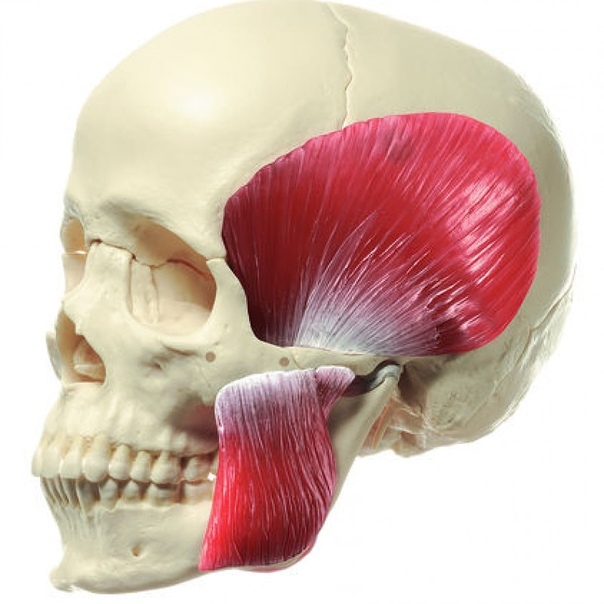 55%.
55%.
When choosing a treatment, we were guided by the leading pathogenetic mechanism.Practical experience shows that NSAIDs are most often used to relieve subjective pain. The main effects of NSAIDs are associated with the mechanism of suppression of the activity of cyclooxygenase (COX), an enzyme that regulates the conversion of arachidonic acid to prostaglandins, prostacyclin and thromboxane. The analgesic and anti-inflammatory effects are mainly associated with the inhibition of COX-2, and the development of side effects is associated with the suppression of COX-1. Therefore, we considered it appropriate to use a drug with a predominant effect on COX-2 – Nimesil®.
It should be noted that when taken orally, the drug is well absorbed. The time to reach the maximum concentration of the active substance in the blood plasma is 2-3 hours. In the elderly, the pharmacokinetic profile of Nimesil® does not change significantly.
After the treatment (pain relief), 29 patients were able to carry out further necessary dental treatment. Thirteen patients showed a significant reduction in pain syndrome. These patients (according to indications) were recommended additional drug therapy, depending on the severity of emotional disorders – anti-anxiety phytotherapeutic drugs [6].
Thus, the results obtained indicate the effectiveness and feasibility of using the drug Nimesil® for relief of pain manifestations in TMJ dysfunction, which makes it possible to recommend its use in dental practice.
Literature
1. Arsenina OI, Oskolsky G.I. et al. Prevalence of secondary deformities of the dentition and pathology of the temporomandibular joint in the population of the Far East. Dentistry. 2010; 6: 59–61.
2. Zakrzewska JM. Diagnosis and treatment of orofacial pain without dental. Dent Update. 2007; 34 (3): 134-6, 138-9.
3. Costen J.B. J. Am. med. Ass. 1936; 107.
4. Syrup C.O. Initial management of temporomandibular disorders.

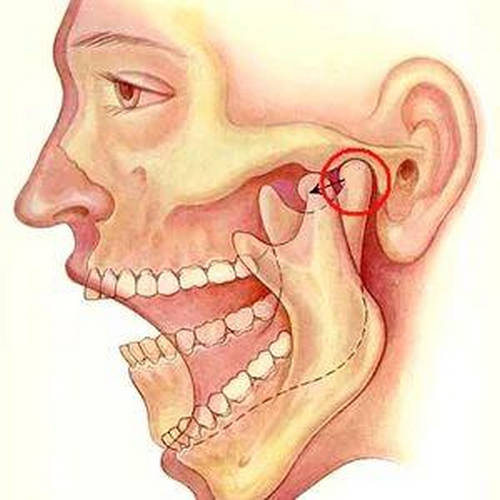 This may or may not be painful.
This may or may not be painful.
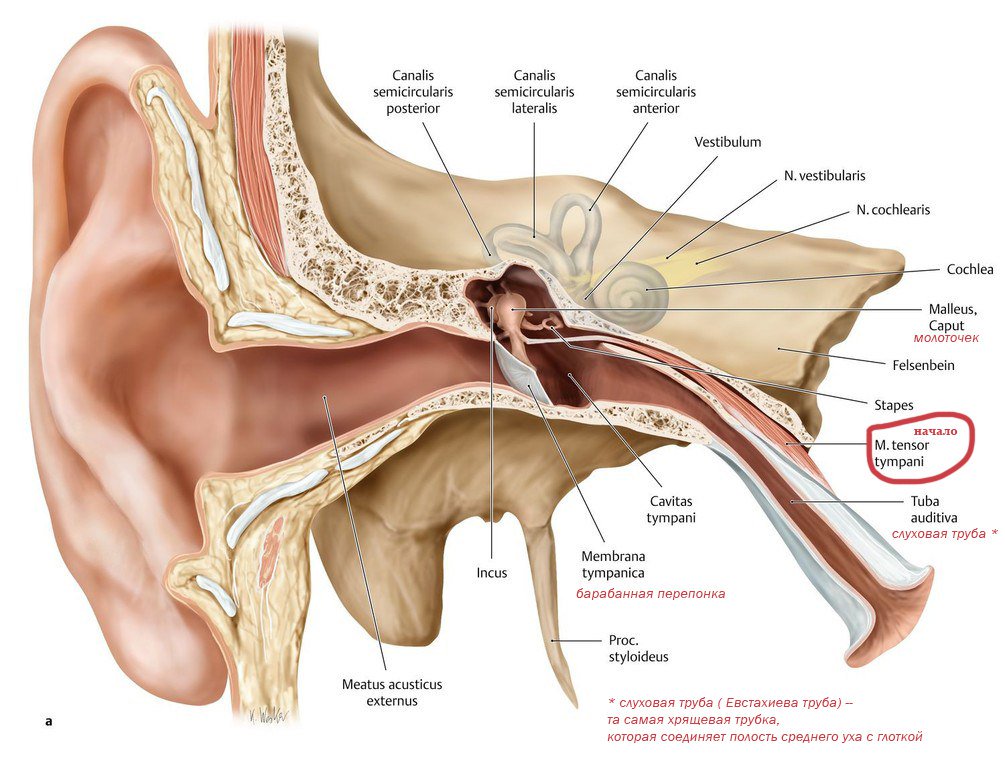 Occurs when a blow to the jaw is received or when the mouth is wide open while eating, prolonged dental procedures, or the introduction of a breathing tube during anesthesia
Occurs when a blow to the jaw is received or when the mouth is wide open while eating, prolonged dental procedures, or the introduction of a breathing tube during anesthesia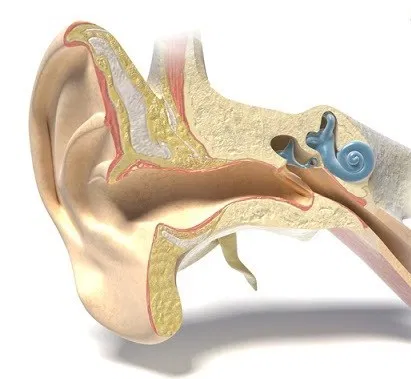 – 2011. – No. 4 (38). – S. 23-29.
– 2011. – No. 4 (38). – S. 23-29.
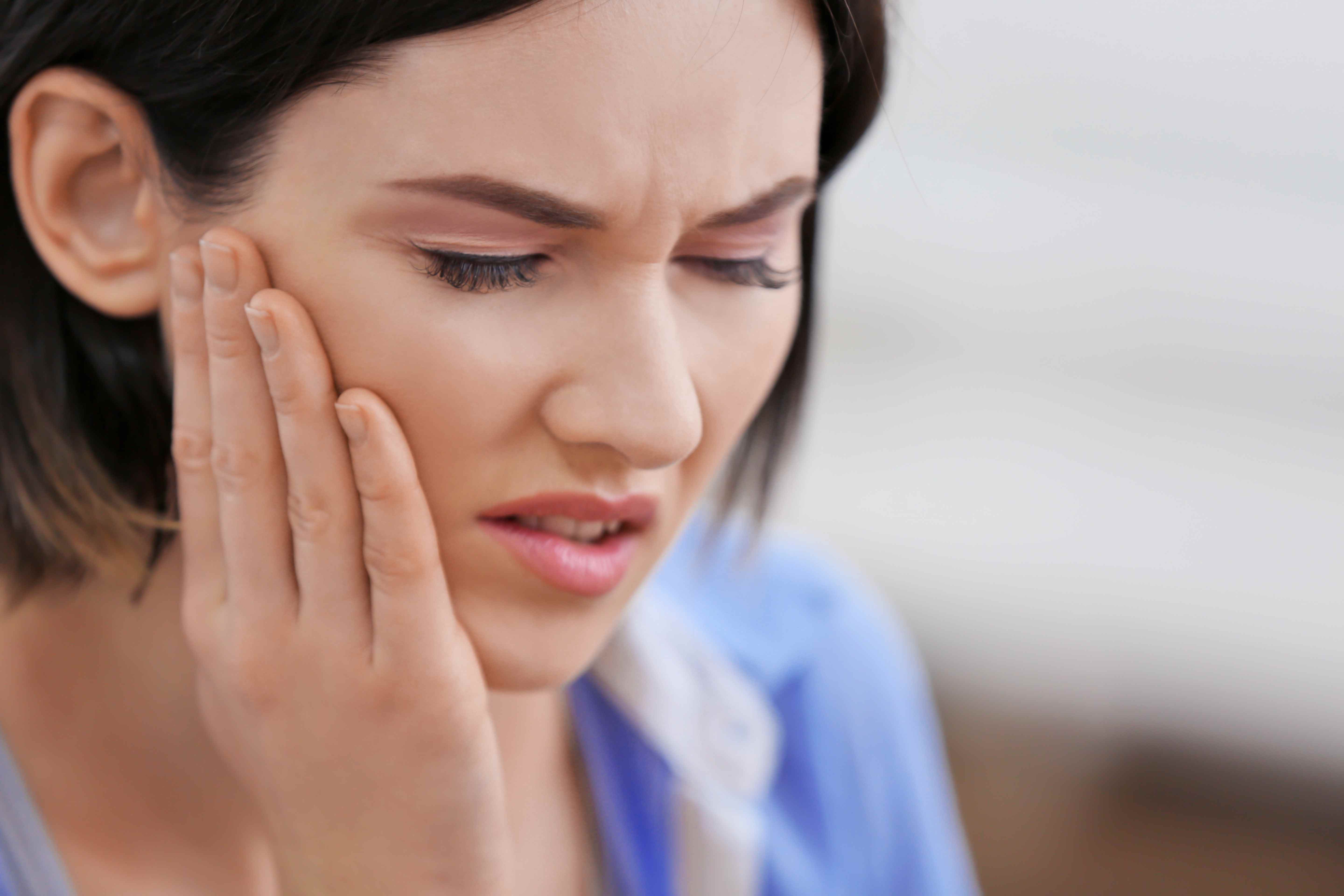 Subjects with visible or congenital deformity of the ear observed on a targeted physical exam; 7. Subjects, the anatomy of the ear canal which does not allow the selection of the investigated device; 8. Subjects with a history of ear pain not associated with TMJ; 9. Subjects with a history of ear drainage in the past 6 months; 10. Subjects with active ear drainage, edema, or redness observed on targeted physical examination; 11. Subject experienced chronic pain (excluding migraine) associated with sleep bruxism or TMJ for more than six months; 12.Subject has a pacemaker.
Subjects with visible or congenital deformity of the ear observed on a targeted physical exam; 7. Subjects, the anatomy of the ear canal which does not allow the selection of the investigated device; 8. Subjects with a history of ear pain not associated with TMJ; 9. Subjects with a history of ear drainage in the past 6 months; 10. Subjects with active ear drainage, edema, or redness observed on targeted physical examination; 11. Subject experienced chronic pain (excluding migraine) associated with sleep bruxism or TMJ for more than six months; 12.Subject has a pacemaker.